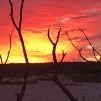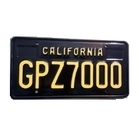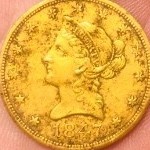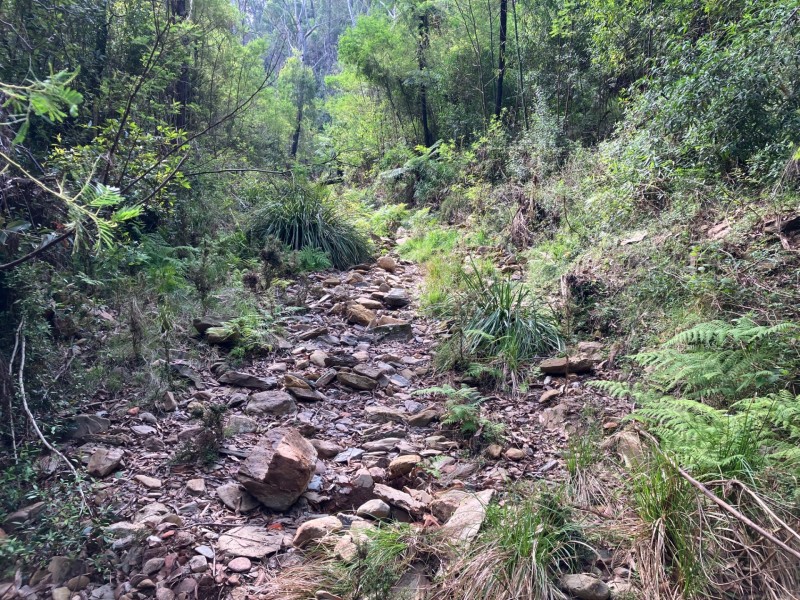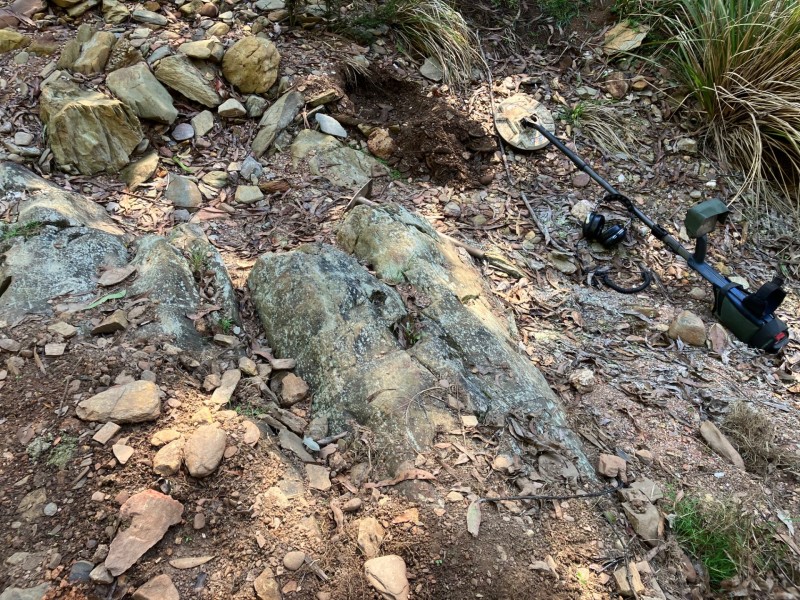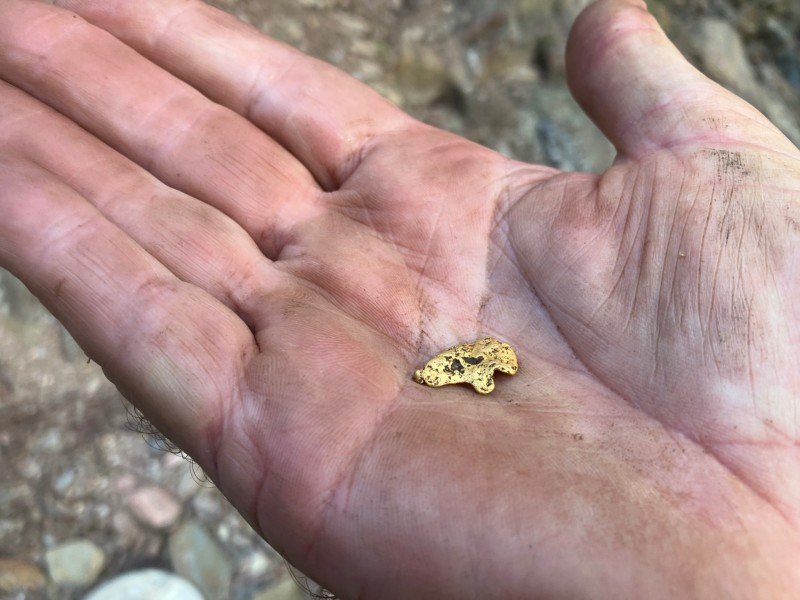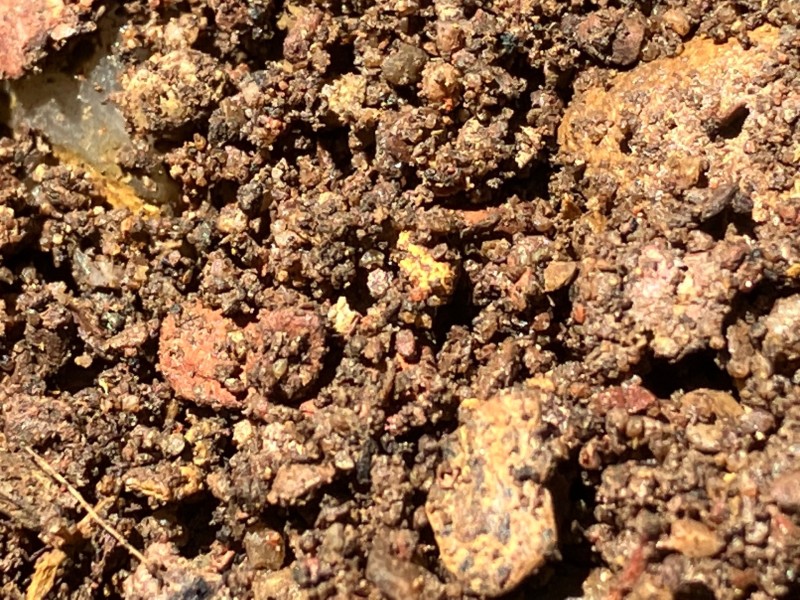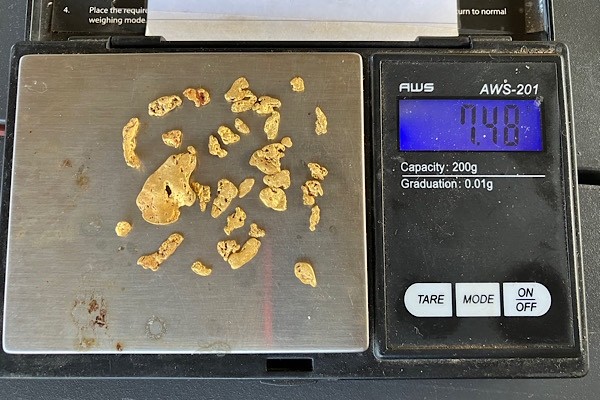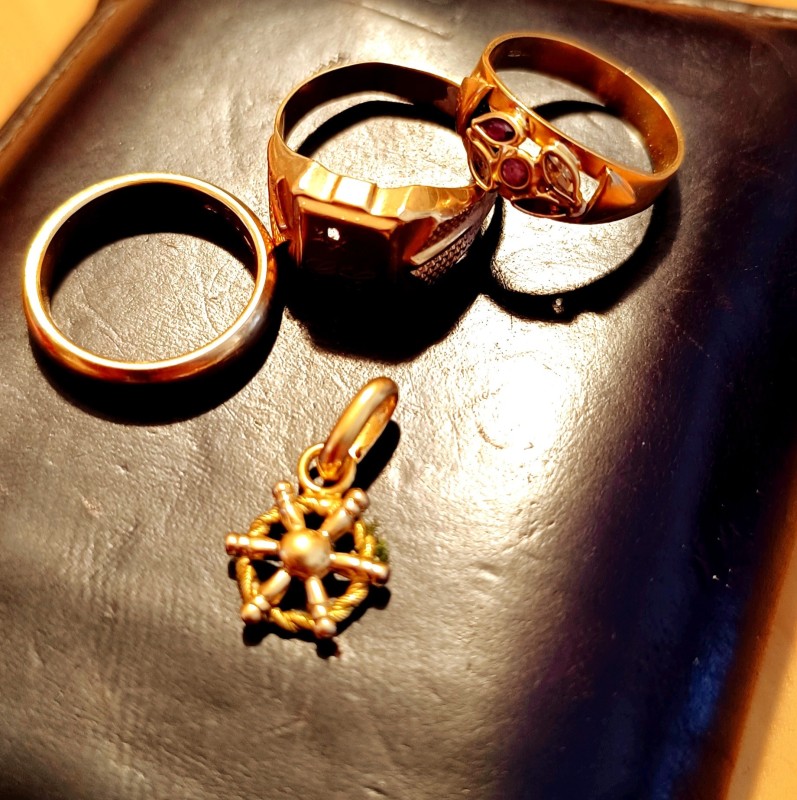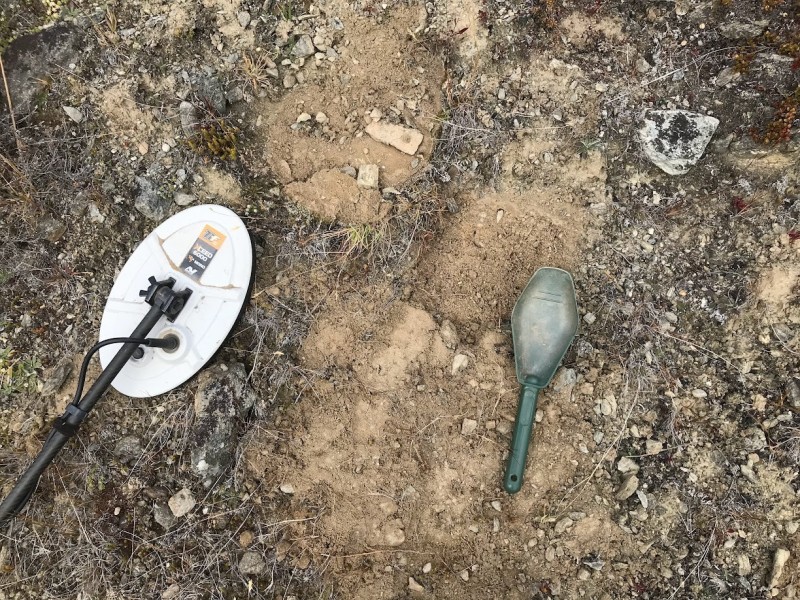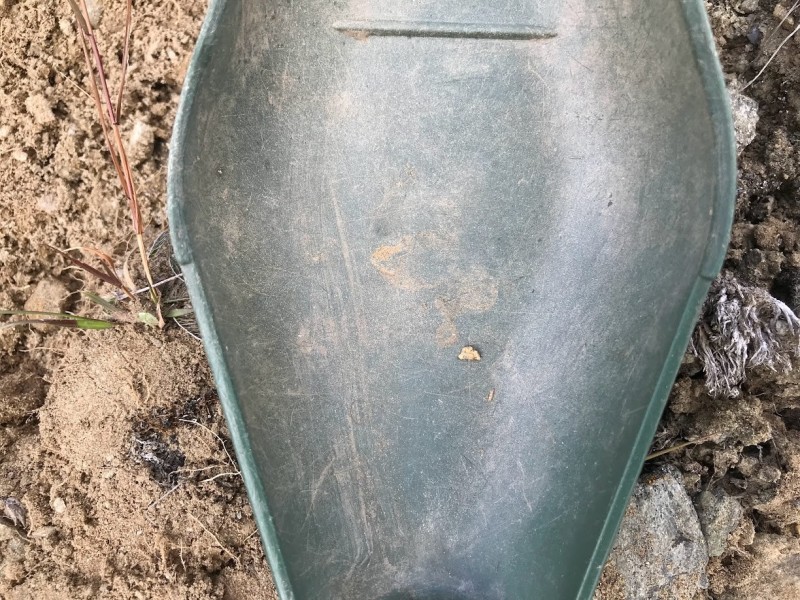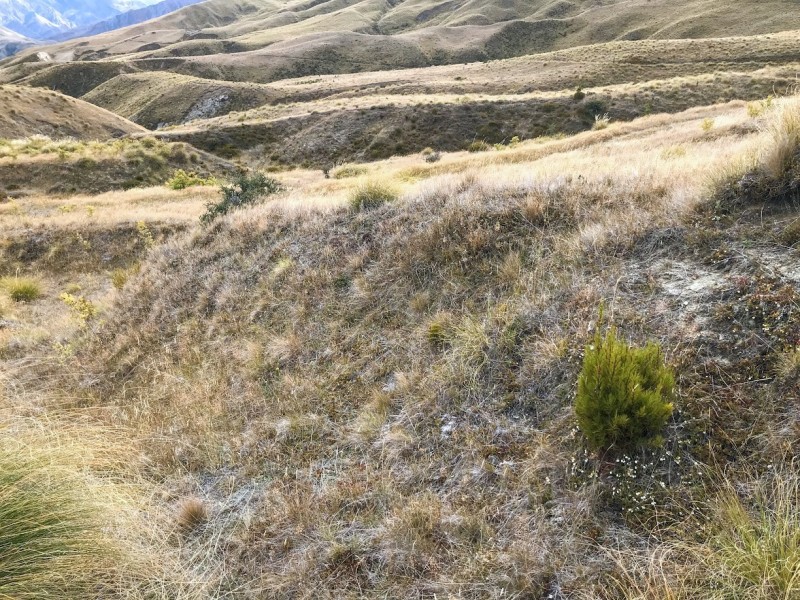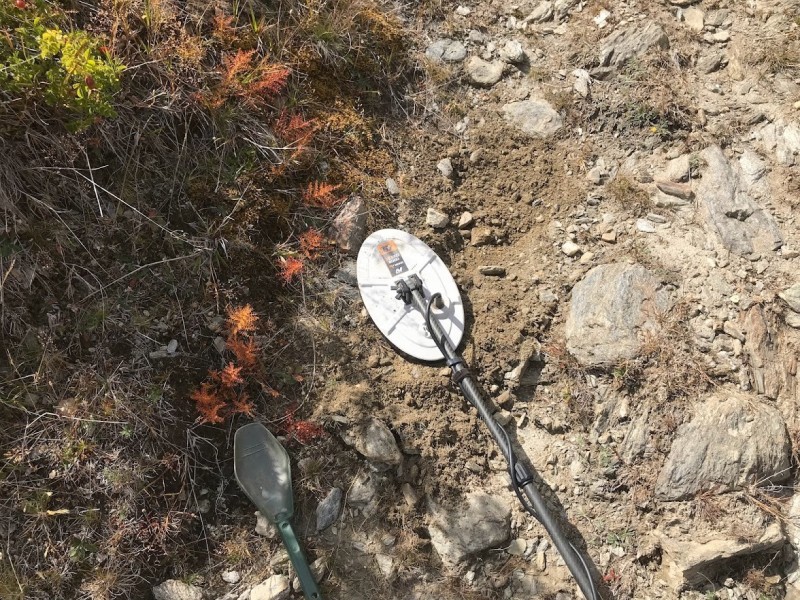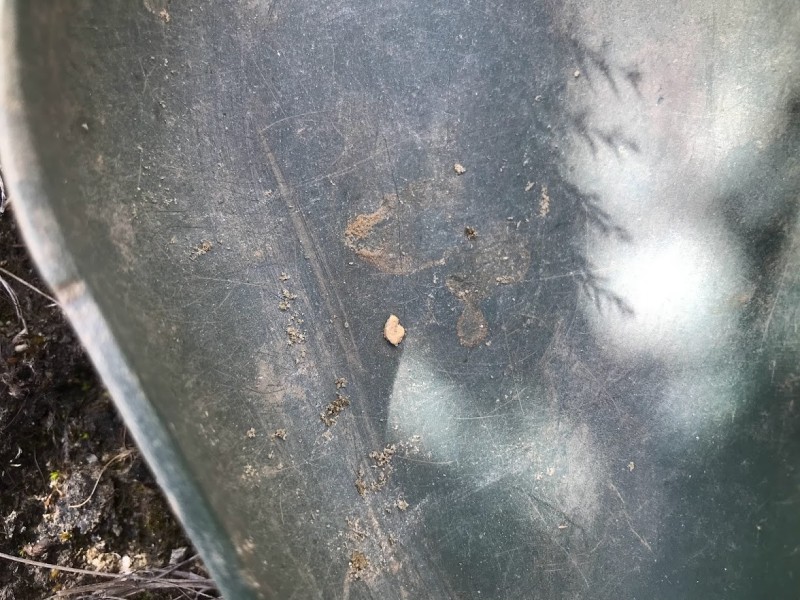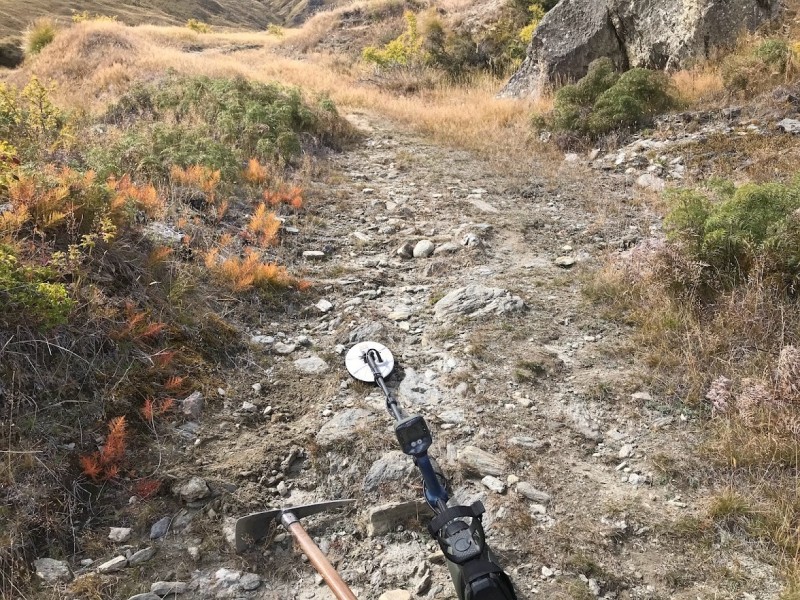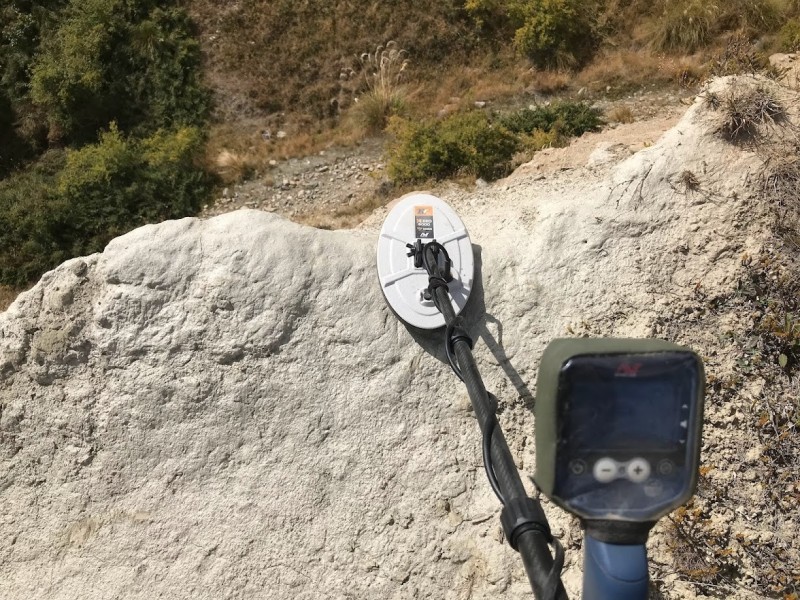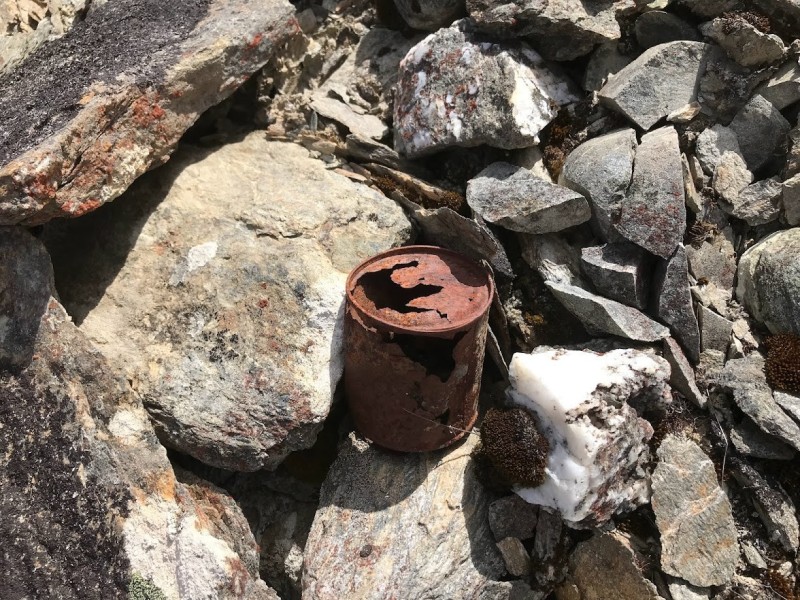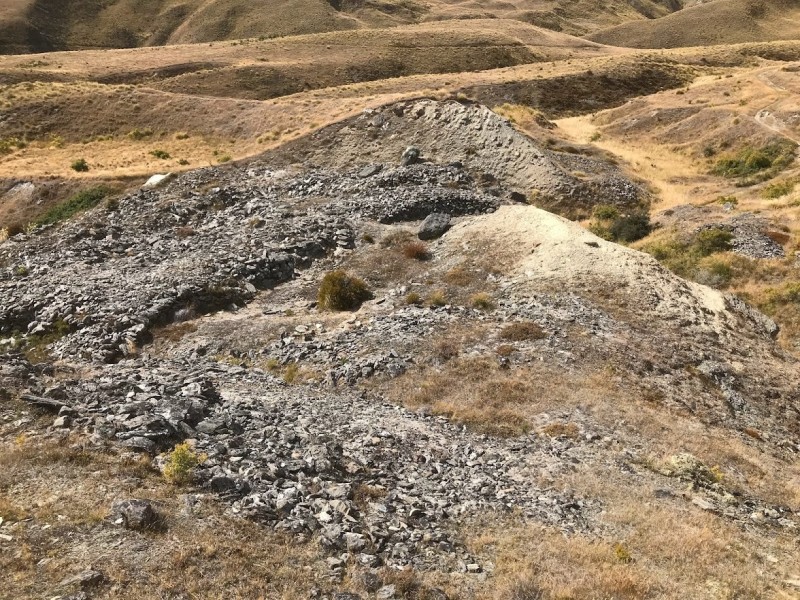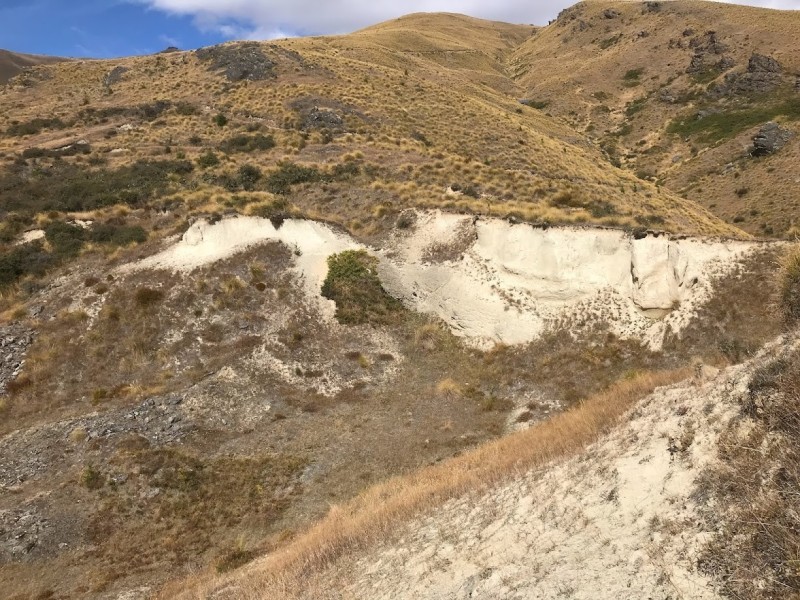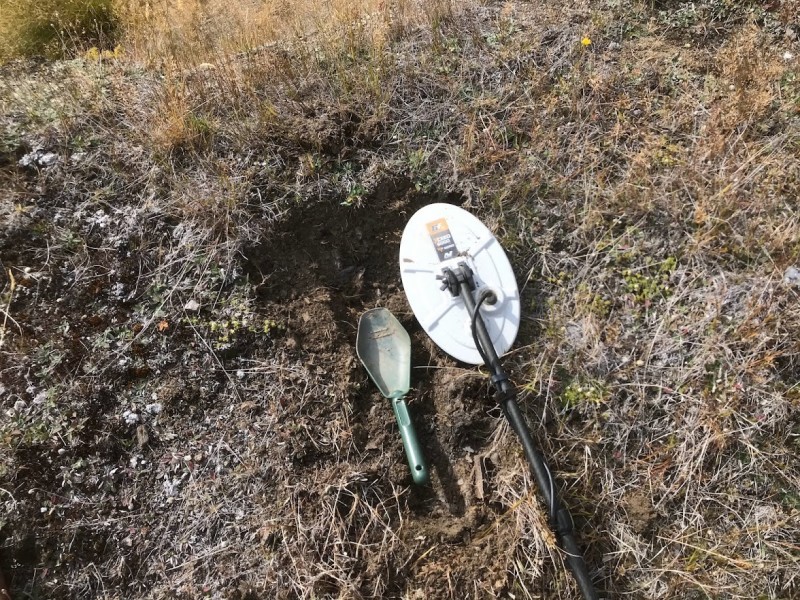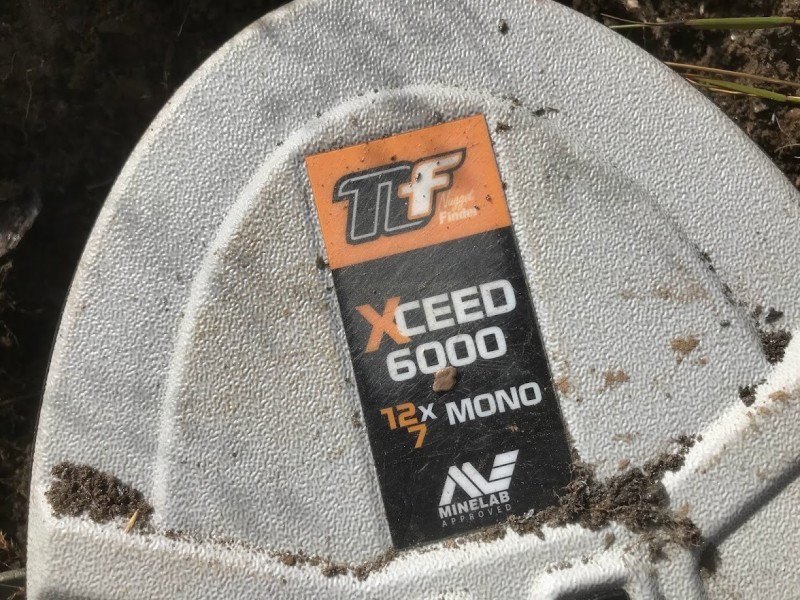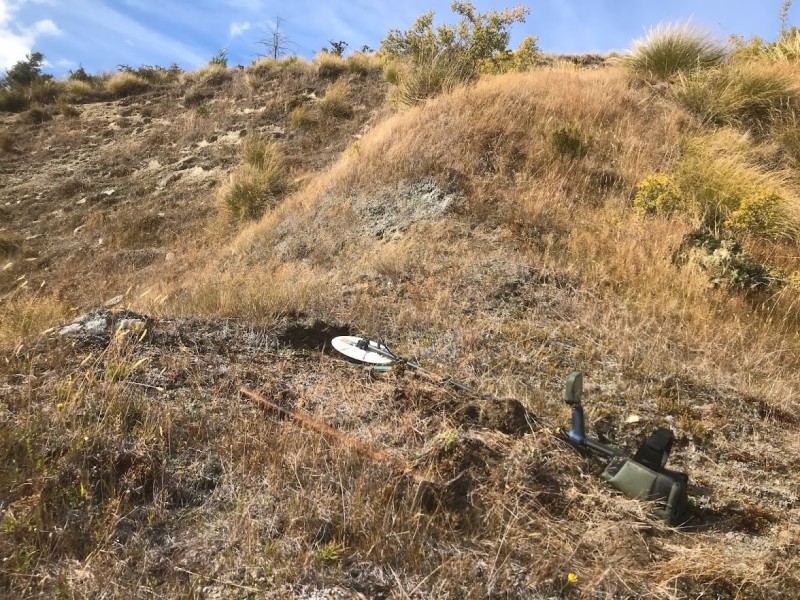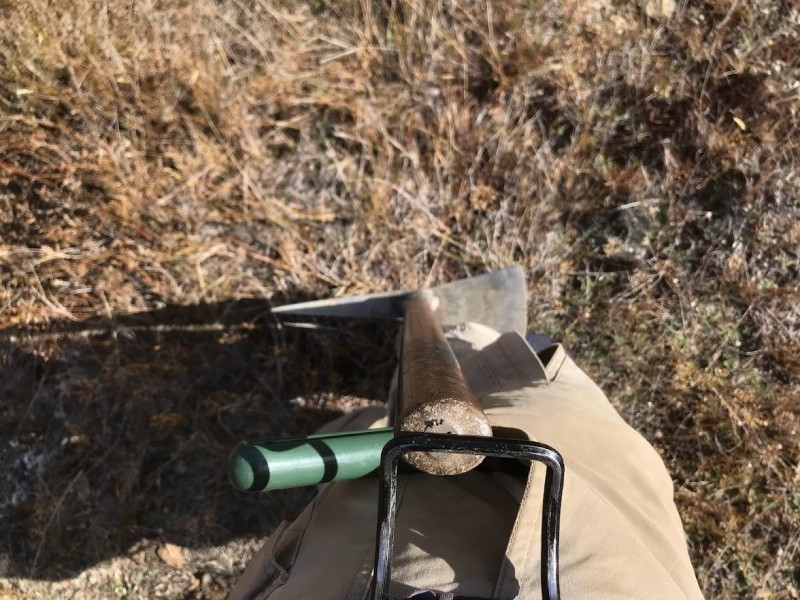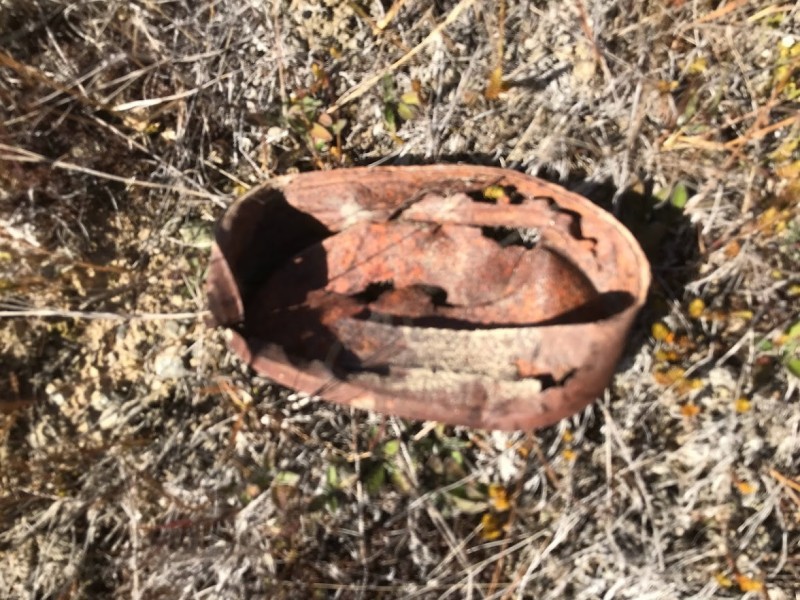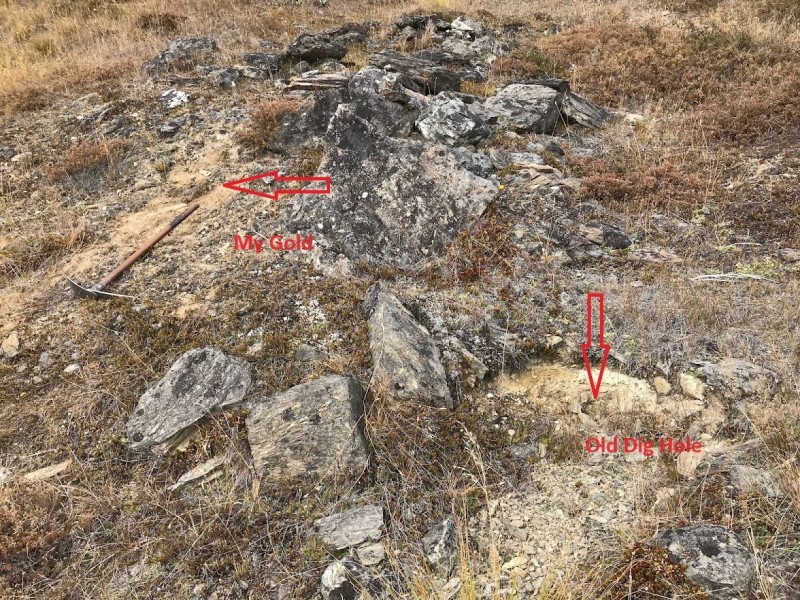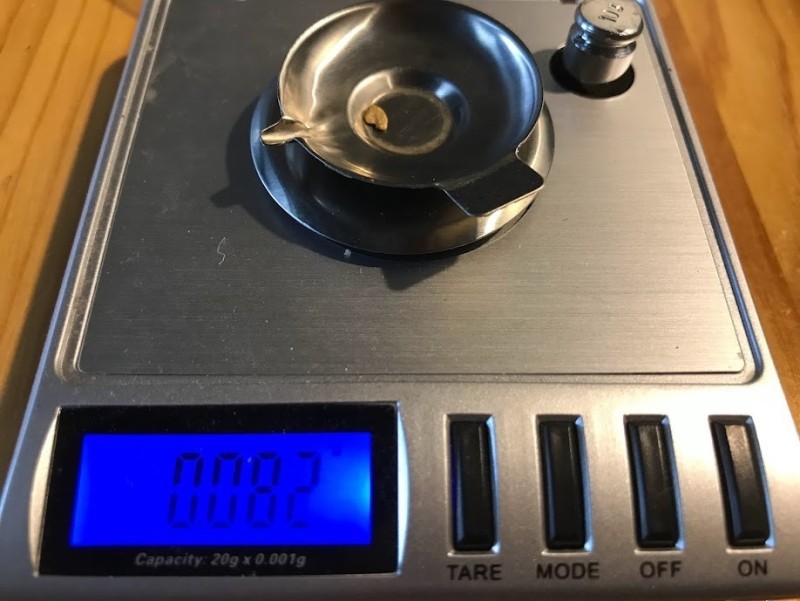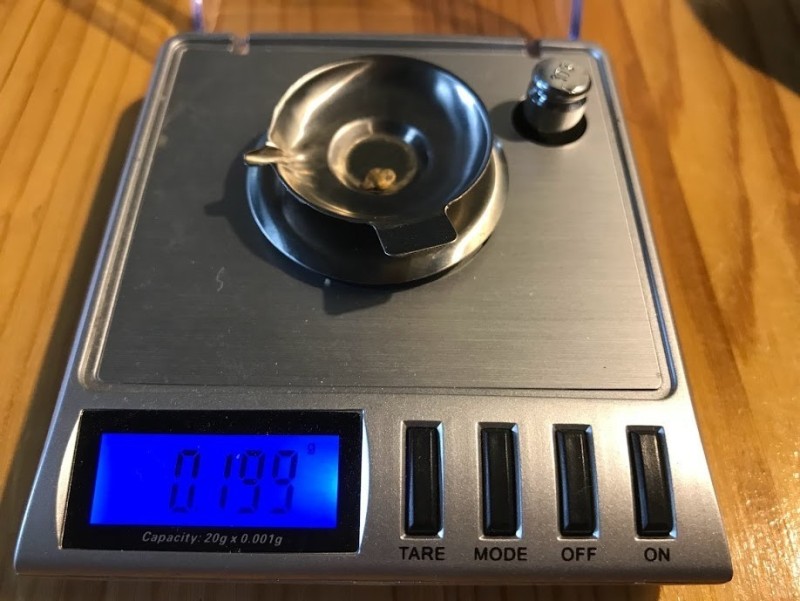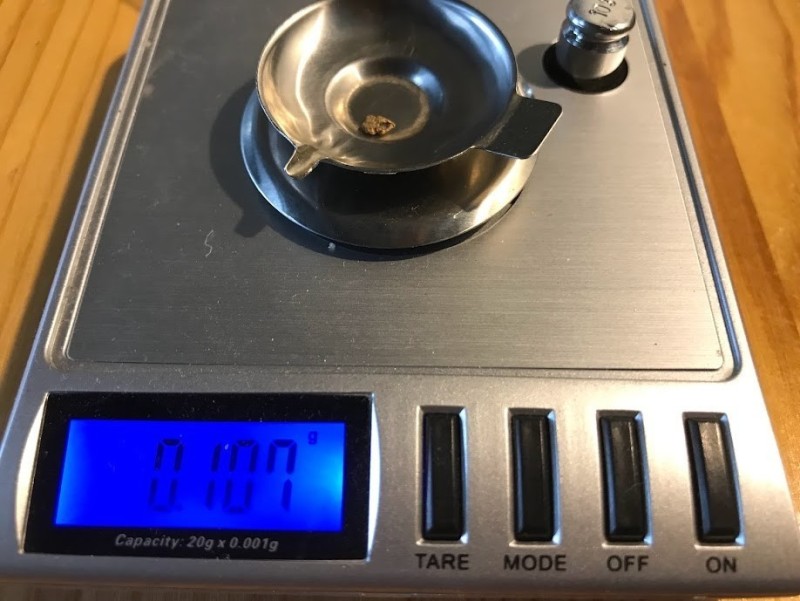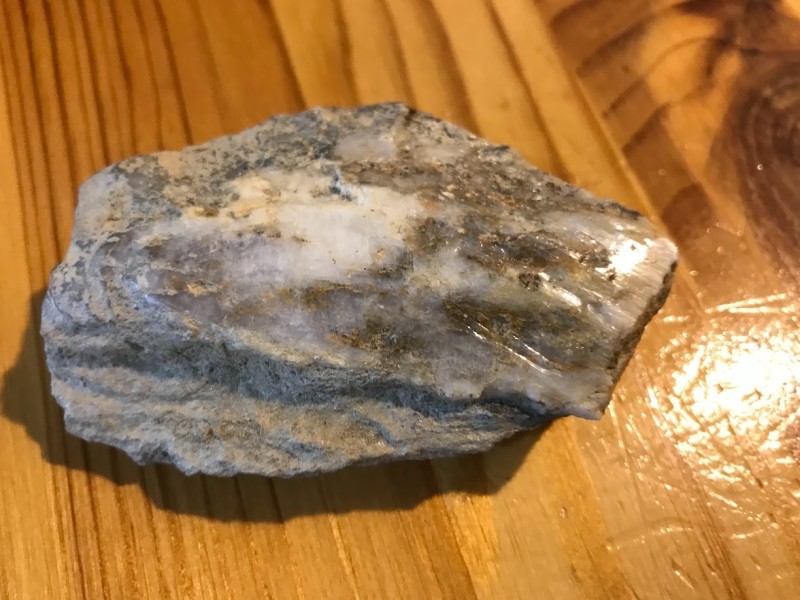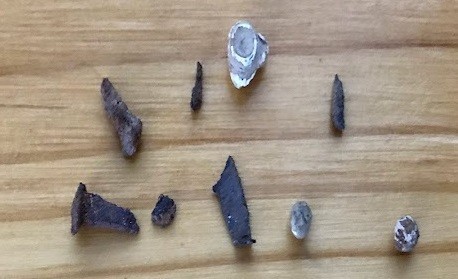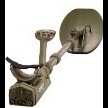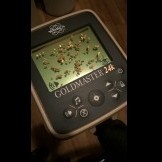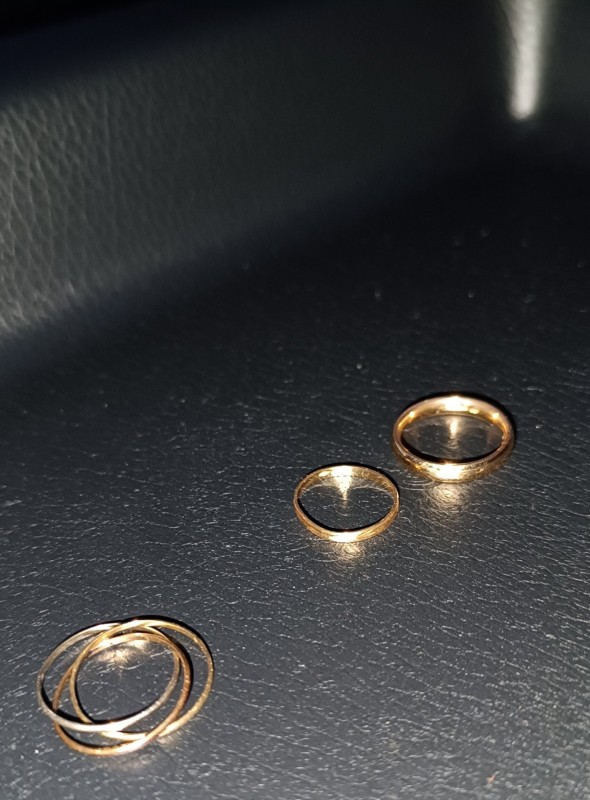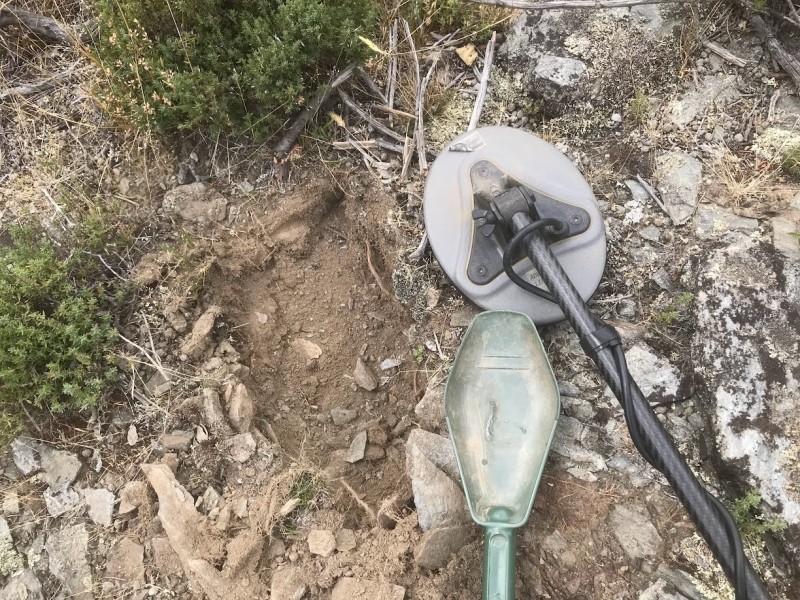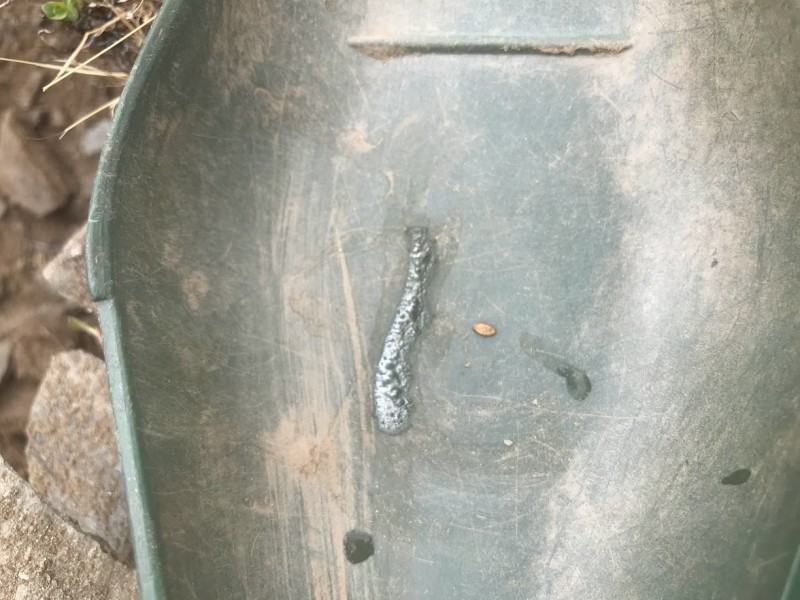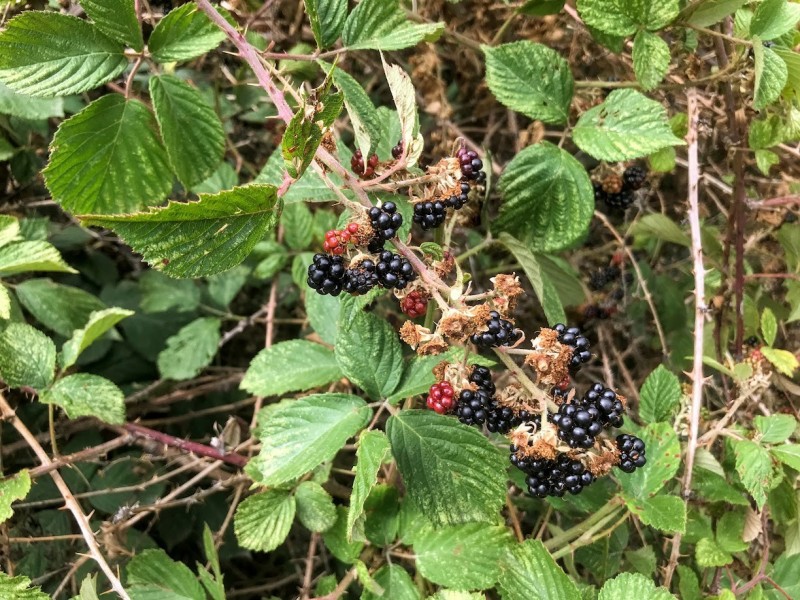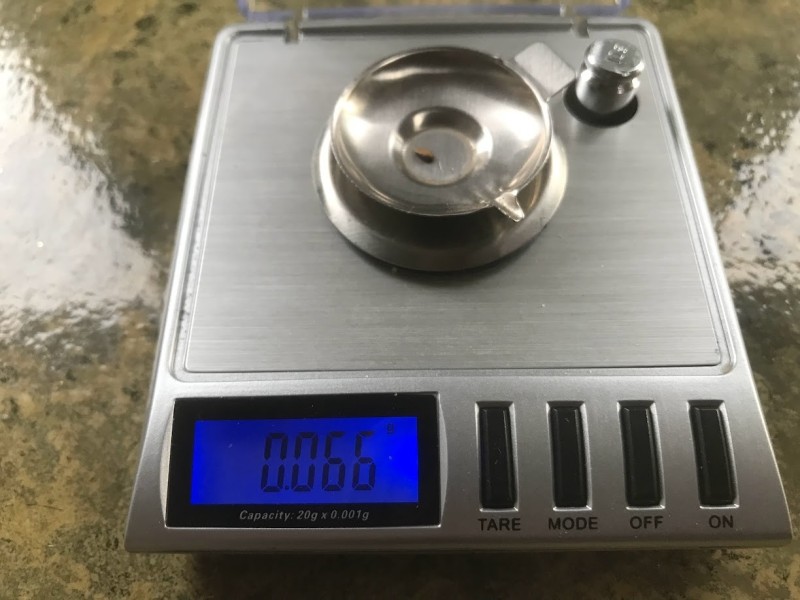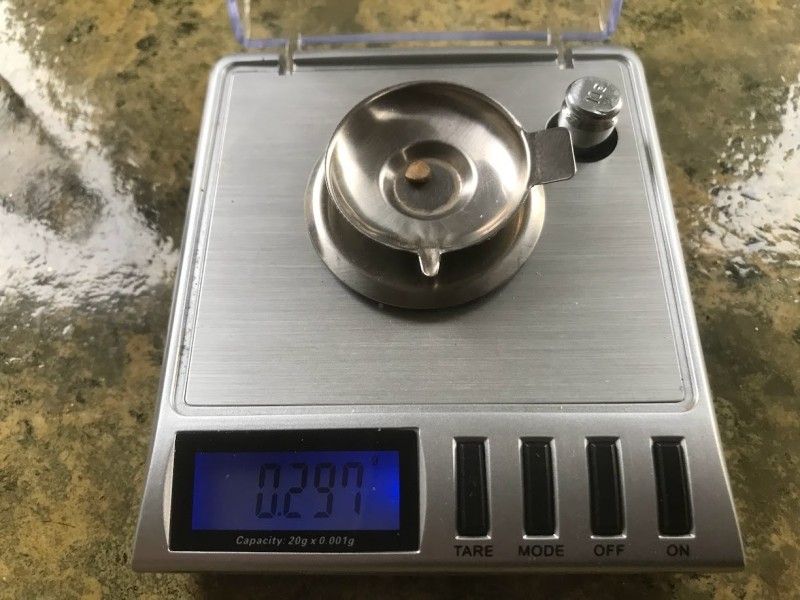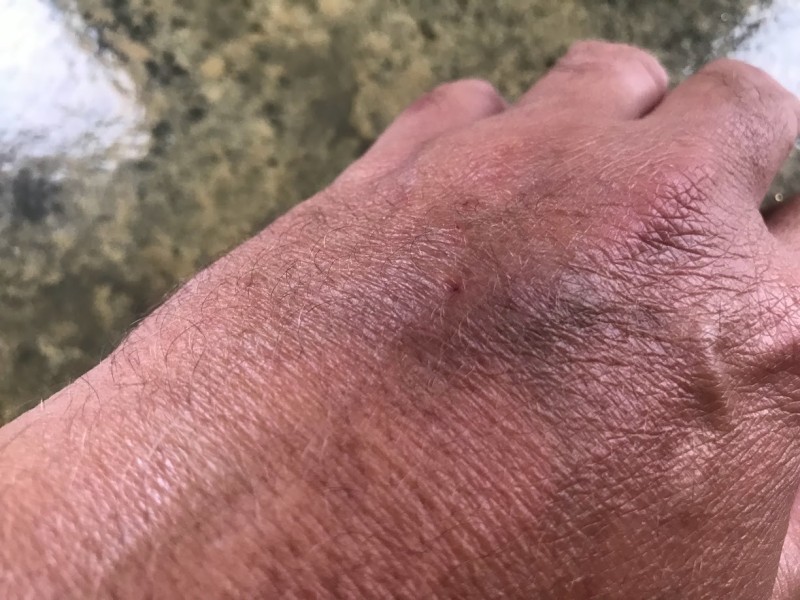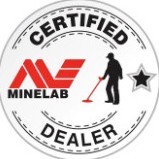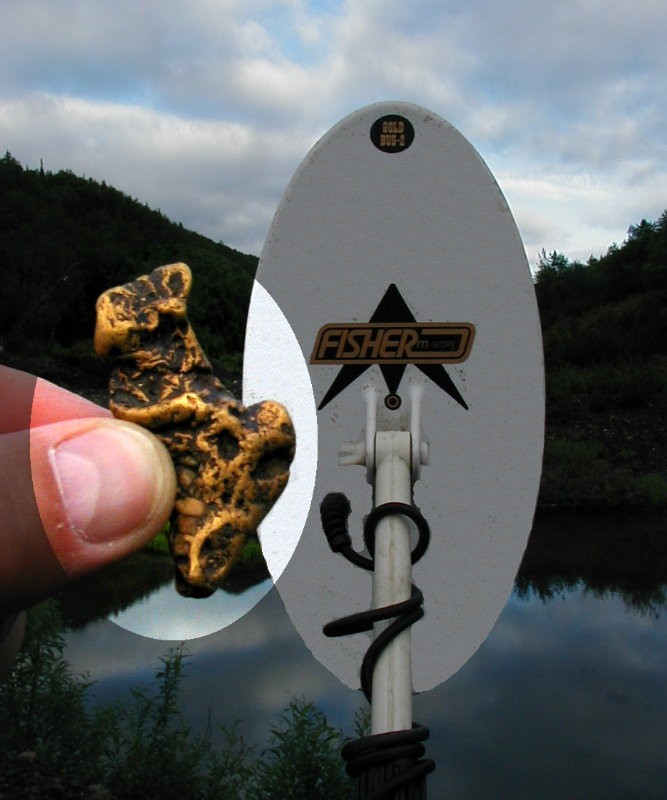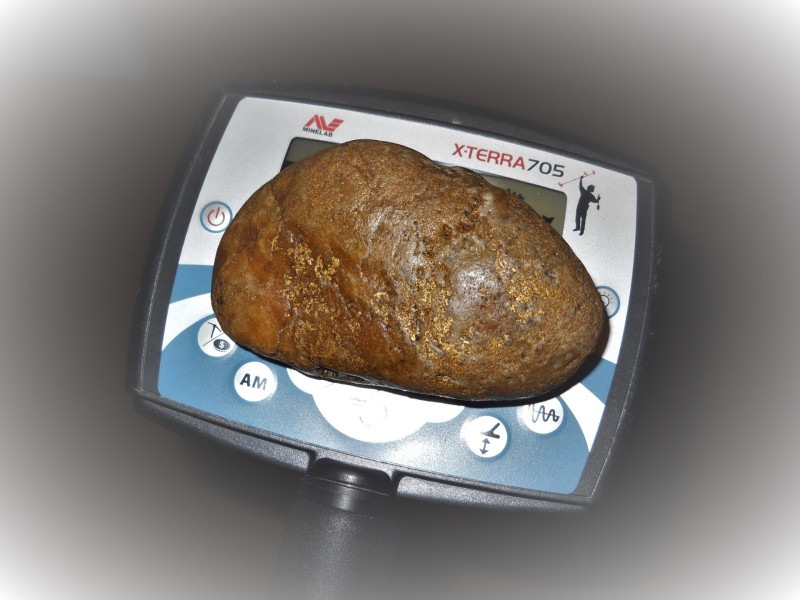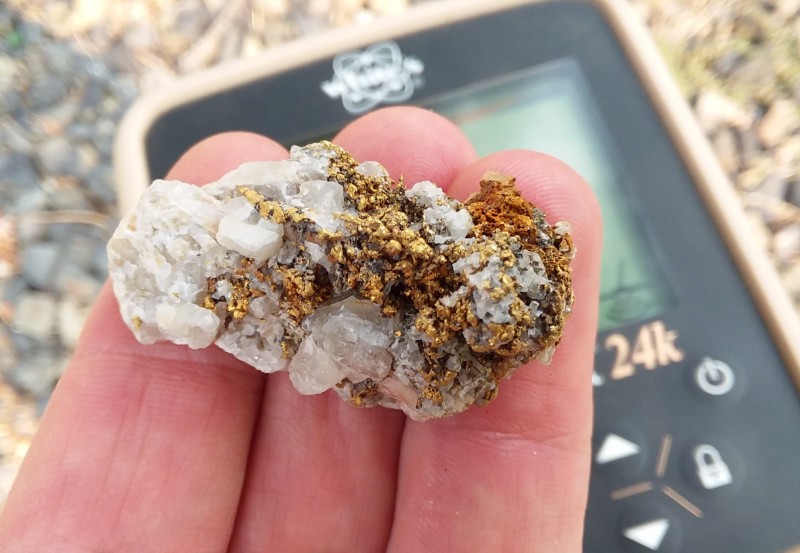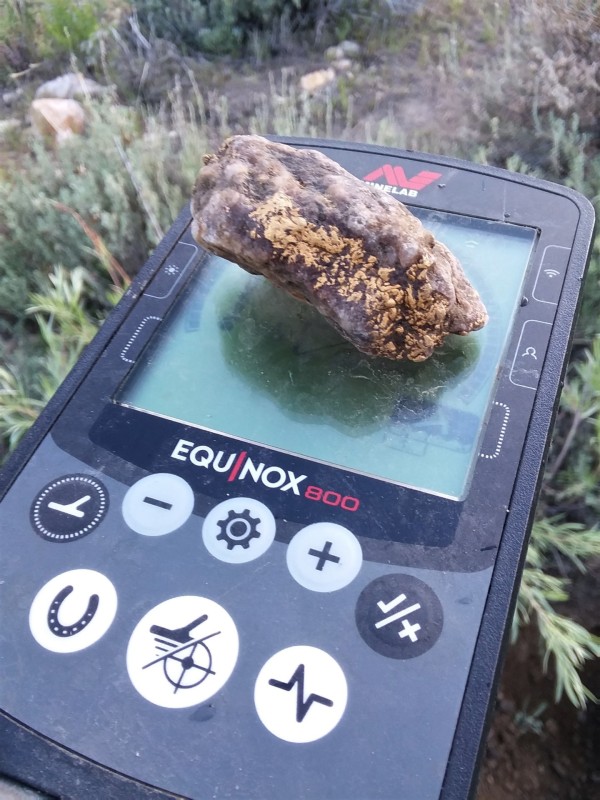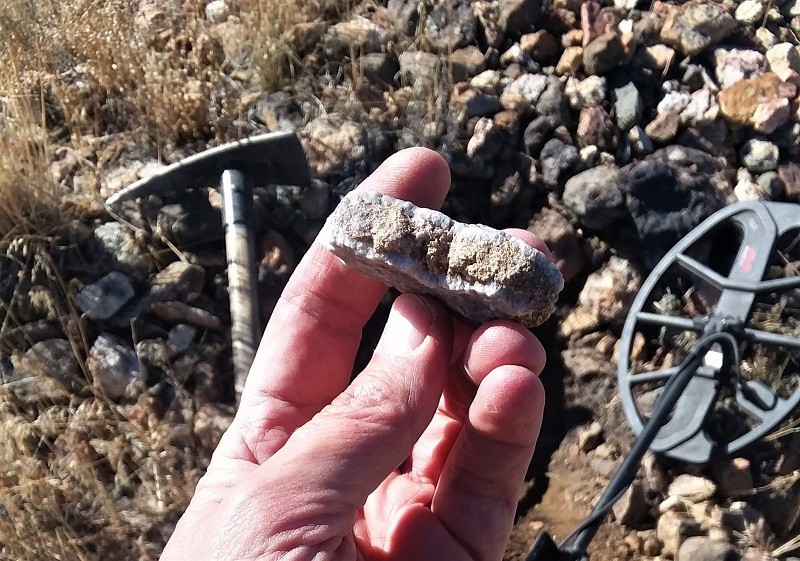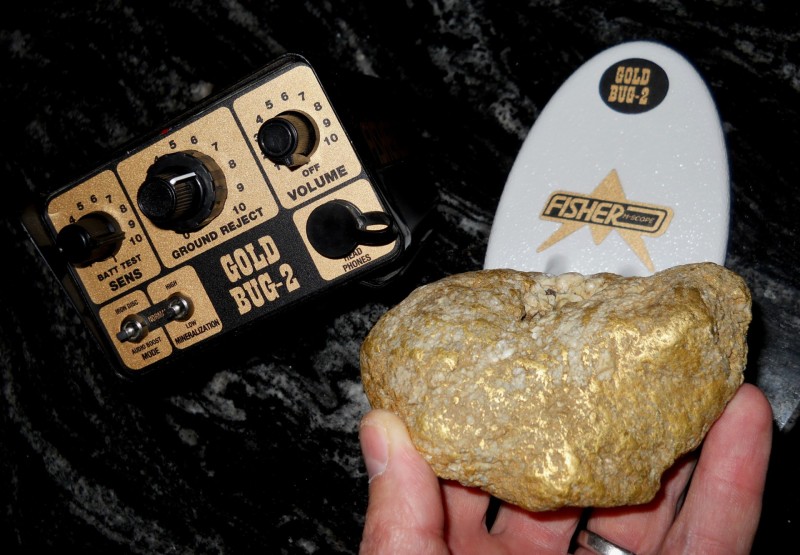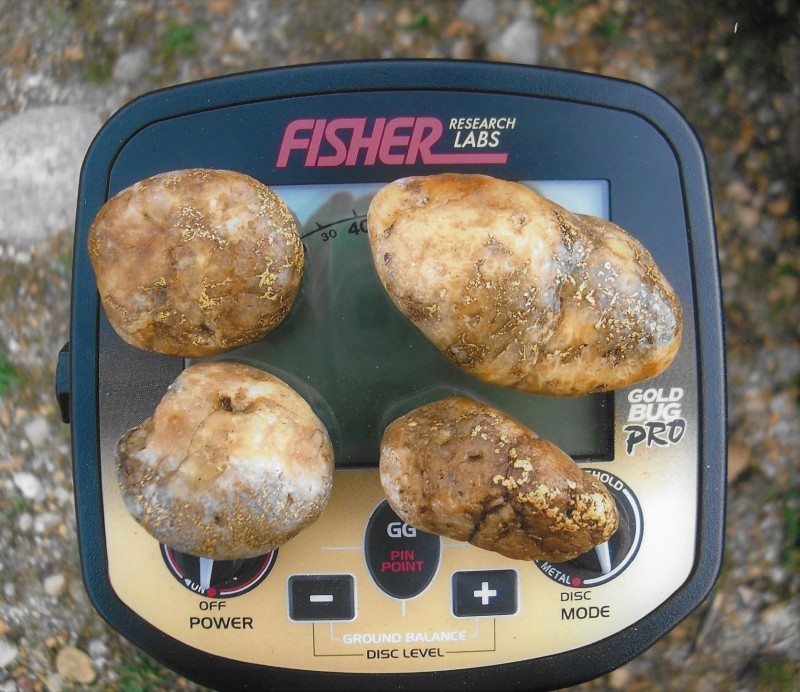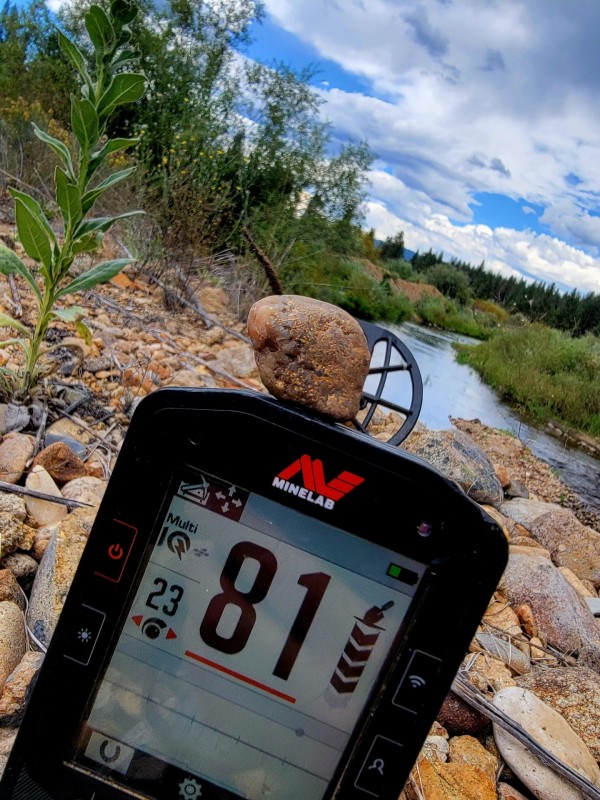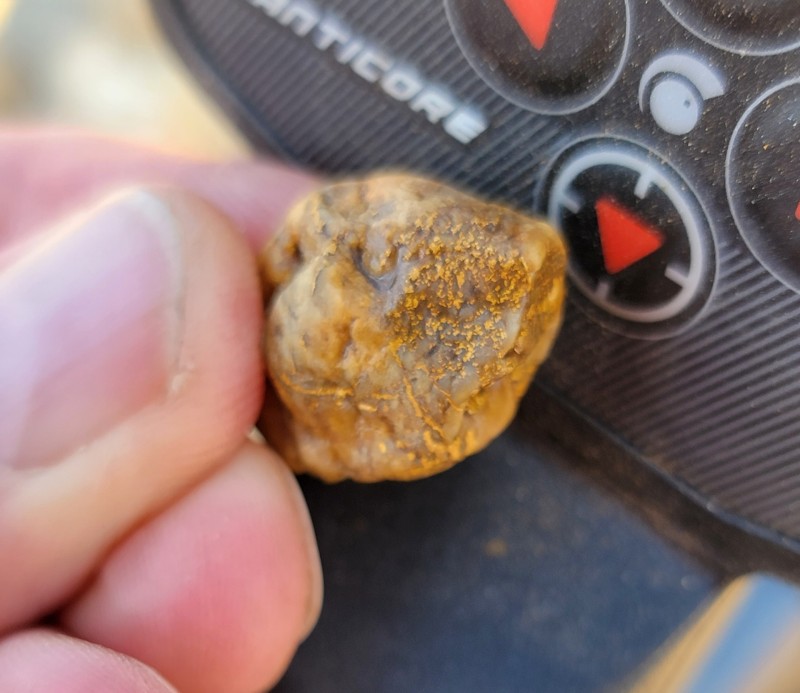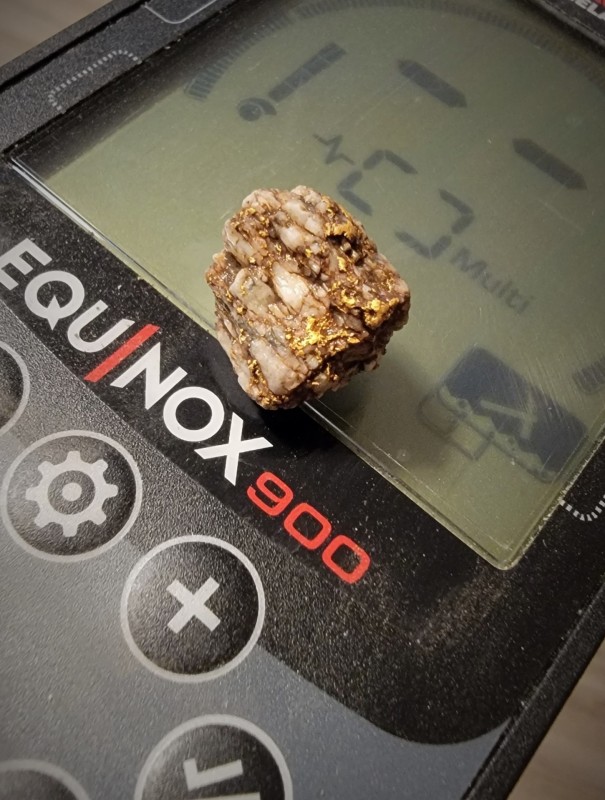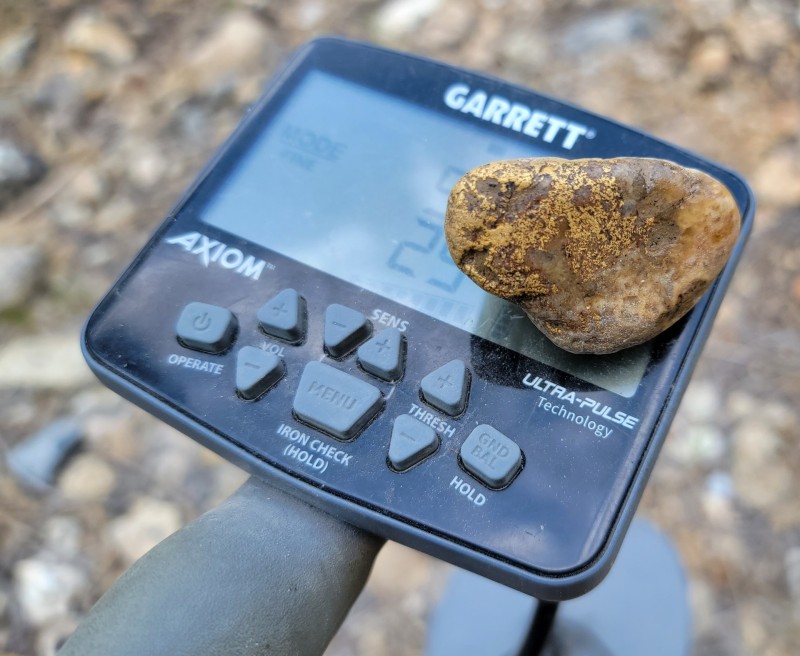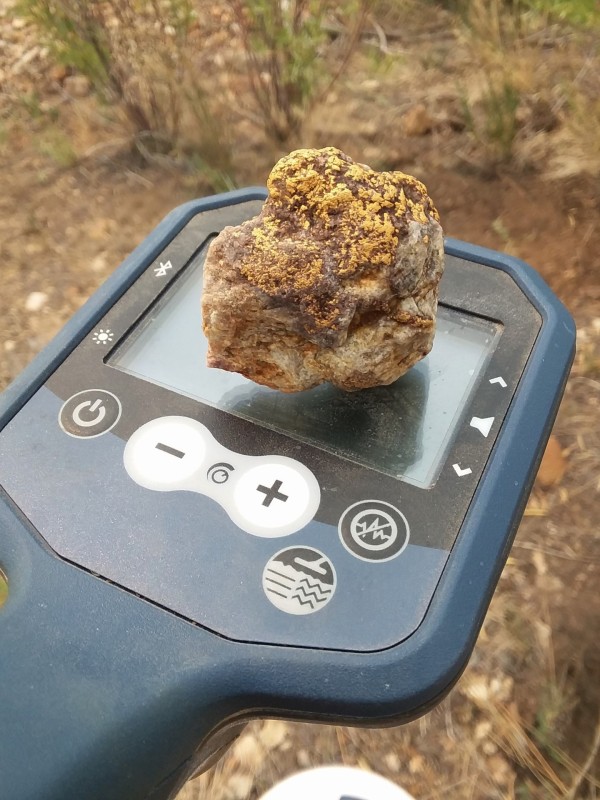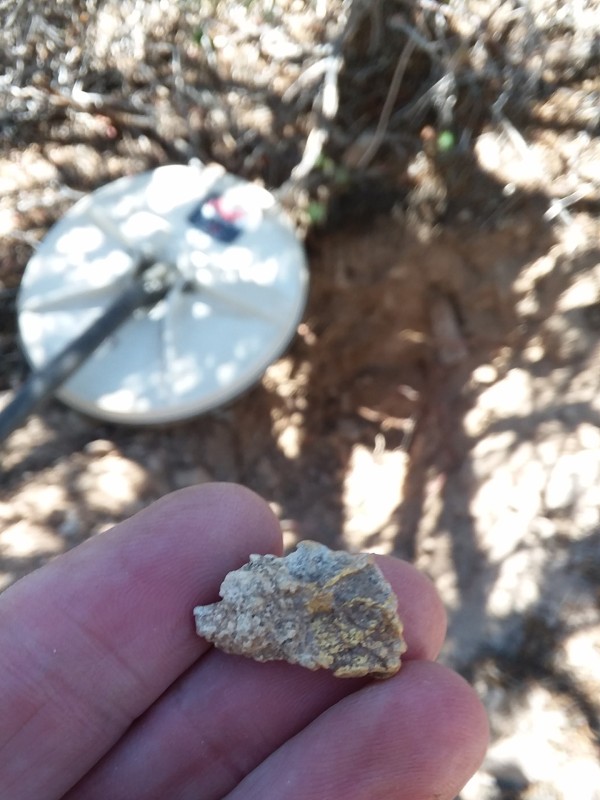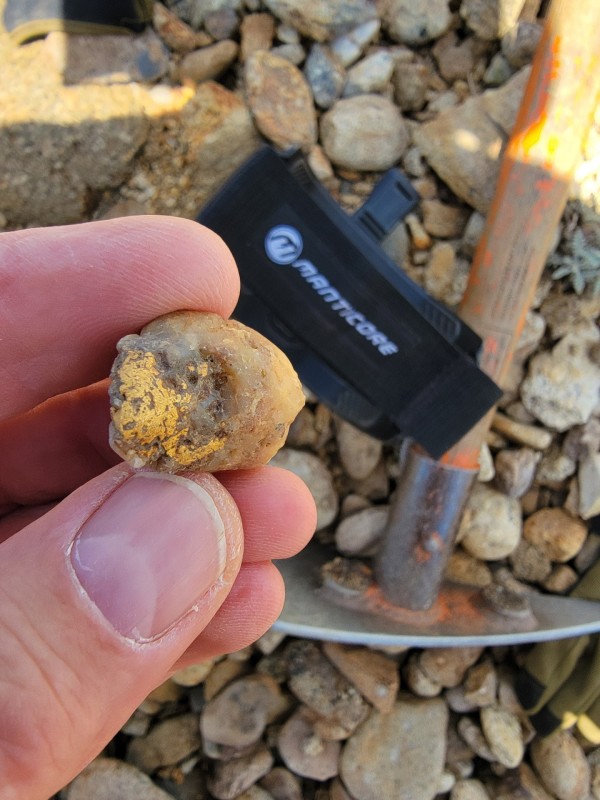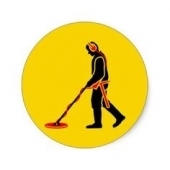Search the Community
Showing results for tags 'gold found'.
-
Okay, this time more than celebrating a period of good production, I am keeping in mind the worst dates of this summer and taking action for next year.... Although we are only a month away from peak beach attendance, to date, I have encountered more than three weeks of bad swells and have spent few sessions on the bottom and more time at the wetsand. As expected, the result is that the fresh drops are probably too deep to manifest themselves and a few pieces of really old gold, perhaps not caught in the obviously eroded spots, is all I can take away for now. Last Monday this very old ring, now devoid of stone, was the only prominent piece on the seafloor besides several coins dug out at three different beaches on the wet sand. In miles of sand on which I have walked and checked, not a single piece of gold and a very small amount of coins when diluted over so much space. The prevailing wind is screwing up "my" coast with a majority of inshore and bloody filling in more sand. I am tired beyond comment and have started using my left arm to lead the detector. I fear I have epicondylitis. Have a great weekend everyone!
- 2 replies
-
- 9
-

-
- beach detecting
- gold found
-
(and 1 more)
Tagged with:
-
Hi Folks, A couple of weeks ago Joe and I spent a day detecting some old elevated workings with the zeds. It was obvious that they had been hit hard over the years and we could see that they had been raked within the past 12 months. It didn’t worry us though as it was a new area and we approached it as an adventure. After working the area for about five hours, we decided to head home early as we had only scored five or six small pieces for our effort. On the way home, we decided to stop and inspect a gully that was located about .5 km to the north of where we had been working. We left the detectors in the car and just walked a couple of hundred metres upstream to look at the potential of the area. What we saw impressed us so we thought that we would do a bit of research and come back another day and run our detectors through some of this country. As the majority of this creek was running through private property, we thought that there may be a chance that this gully had received a little less attention than some of the more famous gold bearing streams in the area. A quick chat with the owners of the land gave us a creek name but nothing else. To their knowledge, there was no stories related to alluvial gold mining in that particular spot. A bit of research showed no reference to the creek at all. The land title maps showed that 70% of the creek was on private property with the upper reaches running through state forest. It was interesting to see that this was an old title where the creek was actually part of the property itself. In other words, there was no public access to the stream without trespassing. That was great for us as we had permission to explore the area. Further research showed that a series of hard rock mines situated on the ridge above the gully had produced payable gold 120 years ago. That was enough information to get us excited. We developed a plan of attack and decided to come back the following week to explore the area. Joe and I decided to use the 6000 with the Coiltek 10x5 attached. We thought that there should be plenty of potential gold traps in the creek and this setup would allow us to get into tight areas and squeeze out any little bits of yellow hidden in cracks or crevices. If we found gold, we could then come back with zeds and look for deeper, larger pieces. The bottom section of the creek was deep ground with very few features so we just quickly ran our machines over this country, concentrating on the wings of the creek. The alluvial soil quickly changed to a mineralised red soil as we moved upstream. There was plenty of hot rocks and quartz in the gravels which gave us hope for better things higher up. After a few hundred metres the country changed. The sides of the valley became quite steep and a rocky bottom started to appear. The country was outstandingly beautiful. Pools of water, small waterfalls, rock bars and huge rocks were staring back at us. It was breathtaking. Joe and I just looked at each other and all we could say was “Wow”. We had found a different type of gold and we just had to stop and take it all in. This type of beautiful country continued all the way upstream. As we were in the mountains, the elevation changed rapidly. We had to climb quite a few rock faces and wade through slippery pools of water in our search for gold. Quartz stringers were running through many of the rock bars and we were hopeful of finding something but targets were scarce. In one area we found a lot of barbed wire fragments which in hindsight may have been part of an old boundary fence. The rock bars that we encountered held beautiful gold traps but they were barren. There was very little evidence of any work being done on the banks by the old time prospectors so we had a good idea that this stream may not hold much gold. We continued upstream until we made it to an area that was directly below some old mines. Joe continued upstream while I walked up the steep bank to try to find the location of the first mine. The undergrowth was quite thick and it was a hard slog to push through the scrub. I walked to and then around the area where the mine was supposed to be located but I never found it. The problem with many of the old mine locations is that accuracy is often not as good as it could be. I met up with Joe again and we detected the immediate area before heading down stream again. The whole area still looked promising but nothing upset the detector threshold. We both agreed that the total lack of lead shot, miners nails, bits of rusty steel etc probably confirmed our suspicions in relation to the creek. To prospect by definition often means no returns in relation to what is being chased but in this case the rewards were amazing. Joe and I worked our way back to the ute with empty rattle jars and smiles on our faces. It had been a great day out. While we were packing up I suggested to Joe that we could spend an hour or so at the old diggings that we had worked with the zeds the previous week. With the small coils on the 6k’s we could possibly scratch out a couple of pieces. A five minute drive put us at the diggings and after about an hour and a half we called it quits with a few scraps in the rattle jar. That was just a bit of icing on the cake to finish off a great day out.
-
Sometimes you just get a 'feeling' and you have to 'do it!' That was the case with my Saturday Night. A forum member and I had planned to go out for a night hunt in the desert. I wanted to go last night because it was FULL MOON. A Buck Moon as a matter of fact. The temperatures are hot during the day but at night can be pleasant. It would be a change from my night beach hunts. Where I was going in Barstow can be up to 110 during the day but we go up a bit higher and it can be 10 degrees lower. Then when the evening comes along it is dry, 80s and this time there was a little breeze. On the trip there I thought I was going to get blown out, but it was just great. Here are some sunset/moonrise photos of the evening. If you have followed the pictures this far then I have some comments. These are from a cell phone. It is not the best camera for the task. It is hard to hold steady and it also automatically adjusts the brightness. This doesn't give the true feeling of the event. My memory of these pictures would be enhanced compared to anyone looking at the pictures. Let me just say a FULL MOON on the desert is amazing. It was worth the trip even if I didn't find any gold. But as good luck and a good detector would have it, I did find 3 little nuggets before I called it a night. The first nugget was the little flat one. It was an extension of a patch I had worked before. I found it and the other two nuggets with the 7000/X10CC. It is quite well suited for this desert, bushes and brush. I have found many nuggets in this area with the X15CC. They are not bashful, but you do have to dig a few bullets and wire. I found about 1 nugget an hour. The second nugget was in a bit of a depression which looked like it had been a 20-year-old dig hole. I got the signal, and the little gold chunk came out. I use the GPS on the 7000 and it comes in very handy at night. I don't have the daytime reference bushes and rocks. As I mentioned, there was a pleasant breeze and out of the corner of my eye, lit up a little bit by my Maglite it was like someone was waving at me. I turned a couple of times, and it was a bush. I talked to the bush on the 3rd time. It was about eye level. "Ok, ok ... I know you want me to come get that nugget. Let me finish here!" After two paces to the bush, which was 10 feet away, I got a hit. Down about 5 inches was this little under .2g nugget. Thank you bush.
-
New in the lineup. First outing at the creek and I hit these two pieces. Went out again and found my first seated liberty (pic in next comment, an 1886!). I'm really liking this machine. I got it specifically to hunt trashy tailings, but I'm so impressed it might replace/pair with a couple other detectors I previously assigned as my daily carry.
-
Went out into the NV desert to prospect. Started yesterday afternoon going to a new spot. I started with the 13"DD. It was noisy. Had to run it on normal timing and cut sensitivity to 6. No luck day 1. Switched locations and coils and used the 11" mono this morning. 10 minutes into the new location I get a screaming signal between two rocks. I moved the rocks out of the way and pulled my first nugget at about 4" deep. It's the larger of the two today. The location I'm at there's quite a few dig holes. I go slow and work this patch of ground. I manage nugget two about 15ft away from nugget 1. The rain sets in and I decided to call it a day after getting drenched. Saturday was 102 deg, today was mid 70's. Perfect detecting weather. Total people I saw out there 0. I think the heat had everyone avoid the desert.
-
There’s a very popular river (I’m originally from Pennsylvania and up there we would call this a creek) that gets many, many tubers in the summer. I had started detecting this river this past winter on the warmer days and got a small gold ladies ring and several non-precious metal rings. It was cumbersome detecting there in the winter because I had to wear hip boots and warm clothing. However, today it was about 88 degrees fahrenheit so I just wore sneakers and swim trunks. You have to get there early because they open the dam that’s about 4 miles upstream to raise the water level for the tubers. So I had low water levels until about 11 AM. I went down stream to start. Found a bunch of fishing lures (mostly panther martin spinners), an old cell phone, a kershaw knife and then when I turned around and started back upstream I got a nice solid 64 which turned out to be a titanium ring. Then as I was getting close to where I had parked, I got a nice sounding 82-83 and after digging down about five inches through the wedged in stones and sand I got a 10K ring with a maker’s mark of TW in an oval. It weighs 5.2 grams. BTW, those Mexican coins were taped together in a stack!
-
Hi Folks, Have you ever been out prospecting, noticed a quartz vein and run your detector over it with fingers crossed? I think we have all done it and generally move on as most of these veins or stringers are barren. Yesterday was a new adventure for Joe and I as we were getting into a new area that we had never detected. It was a small creek that had a history of containing gold with the surrounding hills being mined about 130 years ago. As we walked up the creek we found numerous rock bars and bedrock which contained beautiful and potential gold traps but they were all empty. Narrow veins of quartz crossed the creek at regular intervals and sections of the bank were quite mineralised giving us hope. There was evidence of human activity with the usual rusty steel and lead shot but the yellow stuff was not showing up. The plan was to move quickly upstream leap frogging each other until we found something that would pull us up. We wanted to reach an area close to a couple of hard rock mines that were situated on the hills above the gully. Each quartz vein we walked past was a magnet for the coil and a quick swipe with the detector confirmed what we always expected. After about an hour we hit a spot where a rock bar crossed the creek and there was the usual evidence of quartz stringing it’s way into each bank. I ran the 10x5 across one of these veins and was surprised to get a sweet signal. It was in a few inches of water and was surrounded by some really hard host rock. If it was to be gold, it would be a major effort to break up the quartz to release the target. As it was an exploration adventure, we decided to keep going and have a closer look on the way back. Here is a picture that I took which shows the narrow vein attached to the host rock. Unfortunately the light created an awful reflection that doesn’t clearly show what we were looking at. The vein is about 25mm wide and was visible for about 1m before disappearing into gravels. We continued upstream until we stopped for lunch. At this stage the rattle jars did not rattle and we were beginning to think that we may end up being skunked. After a break we continued on but at about 2:30 we decided to start heading back as it would take us an hour or so to get back to the ute. Joe finally got a signal that required a large rock to be moved as the target was under it. Being in water, it took a bit of work to retrieve but finally a nice little piece of gold popped out. The Coiltek 10x5 did a great job to pick up this target at good depth. Joe and I continued to work our way back until I finally had a hit and started digging out a small piece of gold. Joe at this point was about 20m further upstream and decided to stop so that his machine would not start sending my detector into a screaming fit. He detected up on the bank and also picked up a piece of gold. We decided that this area would need further investigation but not today. We had to keep moving. We finally made it back to the quartz vein and decided that we had to try to chip out the target. Joe started hacking away at the reef like a man possessed and after about 5 minutes we noticed that the target had moved. The small pieces of quartz that were chipped out started moving down stream over the host rock. It was acting a bit like a sluice with the light material washing away quickly. As the water cleared, a small piece of gold appeared. It should have been photographed at that point but when when gold is spotted, logic goes out the window. The gold was placed on the coil and photographed close to where it was removed. You can see the vein above the coil and some of the broken quartz on the right hand side. If you zoom in you may also see another piece of gold sitting on the bedrock. I didn’t know it was there at the time but the coil told the story a few minutes later. A small amount of gravel was then moved and Joe ran the 6000 over about 1m of the vein. Another two signals were detected indicating that more gold was present. And here’s the hard bit. We had to walk away as it was getting late and light was fading. Looks like another trip back to the creek is in order. We will take cold chisels, a hammer and crevice tools with us to make life a bit easier. Any thoughts or ideas as to how we approach this task would be appreciated as it’s going to be a difficult job recovering the gold. What do we do if there’s more gold deeper in the vein? This will obviously do our heads in but in a good way. Here is a pic of the gold we found yesterday. Not a lot but enough to create another interesting memory. I might try to video the next step as it’s a bit different to what we normally do. cheers Les
- 10 replies
-
- 32
-

-

-
- gold found
- minelab gpx
-
(and 1 more)
Tagged with:
-
After staying a whole week repairing the hookah compressor and other finesses on a new harness, Monday I started again from the spot where for three days I had been stumbling on a rock bank barely covered by little sand and totaling 21.09 g... Of course almost two weeks after that, the whole bottom changed its face and I returned empty-handed with almost no signal. On Tuesday I changed areas and much to my surprise, the M9 produced its first gold, which I would say was not bad given the depth and modest ring's weight. Amethyst and probably fake diamond on the small ring of 18K white gold. Wednesday although I was ready to leave, something "higher" wanted me to stay home trapped by parked cars blocking the passage to the gate.The night before we celebrated an anniversary with excellent wine, fish and roasted meat and I forgot to move the other family cars and leave myself an opening..At the end of the story I couldn't wake up at 5 a.m. all the others for the keys...Screwed day, considering that at 8:30 a.m. at maximum, I resurface and leave the beach already invaded by bathers. Last session of this week yesterday, Thursday, again in the same spot where on Tuesday I scouted with the M9 the first piece. Three hours of silence, a desert of smooth clay covered by little more than 4 fingers of sand. A paradise that turns to hell because of the current that plays at moving objects everywhere until the first depression, which is generally filled with much more sand. So ten minutes before I resurface exhausted, I get close to shore again and a solid signal just after a sinker saved the week and brought me closer to the 10g target I set for myself. In total, 7.53g of 18K in three sessions. Today and till sunday, too choppy and I stay out of the area for rest. Have a great w.e. You all!
- 5 replies
-
- 10
-

-

-

-
- jewelry detecting
- gold found
-
(and 1 more)
Tagged with:
-
Last night (about 12 hours ago) conditions were right to drive 3 hours to an area that still holds a few nuggets. You have to do that sometimes around here when the heat is on or you might find yourself in a hospital. The moon was out until I got there and then it conveniently hid behind a mountain. It was still quite a good night with the stars and the Milky Way cloud above. I looked briefly for a meteor but didn't see any, so I went out with the Sadie and the 1500 and started detecting. The location was a bit 'random' but also chosen because of a dip I could see with the 4Runner headlights. I know I had been near this area in the winter but everything looks different at night. Night hunting is not a bother to me because I do so much of it on the beaches but there is a bit more light than this location. No one lives within 5 miles and you could count all the people on two hands that live within 10 miles. There wasn't any wind in this canyon like there was on the outside. That made it easy to set up the 800 headphones, 1Mii transmitter and 1500. I have the latest software update. I used Normal as the setting and was at 21-22 with the Sadie to start. About 50 feet from where I parked and 15 minutes into hunting I got a nice signal. I scraped and it was still there. That is a good sign. It was on the side of the depression I had spotted with my headlights. I pinpointed with the Sadie and the ID came back as 13. I was hopeful. I dug down with the pick and moved the target around some larger rocks about 4 inches deep. Out popped the nugget but I didn't have my phone. I didn't have far to get it so I took a couple of pics. I haven't heard about the others who have them in the states but I have to assume this is not the first Algo gold in the states. I finished the wash with the Sadie and wanted to use the 12" Round Evolution. I didn't come up with one there or the other 3 places I stopped. It will have to be another trip. There was trash around and now that I can pinpoint then I can ID as well. I've shown some of the trash and the numbers when using the Evolution. The Sadie has some different numbers, but this will be a useful tool for a prospector. The nugget is .75 g. It is a bit of a composite so maybe that is why it was not found by other detectors. The heat started to come so it was time to leave at 9:30 AM. I've been up all night but it is nice to get a wild nugget with the Algo!
-
With little expectation, last Monday I began an inspection dive to check a narrow corner between a stretch of public beach and an old arm of the harbor. While the large concrete structure helps keep the corner protected from wind and wave energy, it also actually creates a troublesome decades-old pile of algae and sand. The risk factor is water depth, where in reality the Manticore is not necessarily the first choice to use, when in fact the Excalibur was and forever will be. Because of the lower level these days, however, I was able to get down and with some wonderment found a decent uncovered area with something like a cut. I closed the last session on Wednesday, leaving the area after a total of 10 hours of bottom in three days. Next week I will work on another SSA project and rebuild a proper harness and ballast system.... Have a great weekend everyone!
- 10 replies
-
- 23
-

-

-
- jewelry detecting
- manticore
-
(and 1 more)
Tagged with:
-
Took a trip out to Rye Patch today. I walked for about six hours with very few beeps. Decided to go back to where I found four nuggets a couple weeks ago. I circled around that location for about 15 minutes when I got a very faint but repeatable tone. I scratched two inches off and the tone improved. 4 inches and it was getting loud. At 6-7" I'm starting to think maybe it's junk. At 8-10" I moved it. Got it in the scoop and ran it over the magnet. No iron. A few shakes of the scoop and had it in my hand. 1.52 grams. My biggest and deepest.
-
My detecting mate and I have been working a dry gully for quite a while using our 6000’s with 10x5 Coiltek coils attached. We had been finding a bit of small gold but lately our returns diminished and we had almost decided to move to a new location. In a bid to squeeze out a few more pieces, we decided to detect the ground with our 7000’s and try to uncover a few deeper nuggets. We weren’t expecting much as we had spent a considerable amount of time working this area on the short gully and thought that if we could come home with a piece or two we would have achieved our goal. The Six with the small coil really suited this area as there were many potential gold traps and hiding spots for the tiny pieces that inhabited this location. The Zed’s were fitted with Nuggetfinder 12” Z search coils and after a ground balance and tune were running exceptionally well. The hot rocks and noisy ground that played havoc at times with the 6, were ignored by the 7’s so we knew that we had a bit of potential to find that really subtle signal. We moved slowly and tried to get into difficult areas and hopefully jag something for our effort. After about 20 minutes we added a couple of small pieces to the rattle jar from steep banks on the sides of the gully. It was agreed that the shallow pieces would have been picked up easily with the 6000 but were now happy that we hadn’t been “skunked” for the day. Joe was working a stretch of ground that had produced well for us in the past so I decided to move upstream about 50m to give him some space. I started at a rock bar that had given up some treasure about a month or so ago. We had pulled about 6 very small pieces on and around the outcrop and made a concerted effort to cover all the ground in that area very well. Every subsequent trip resulted in a repeat of that process just in case we missed something. The same region was detected today with the Zed and to my surprise, a very faint signal was heard. It was in an ideal location next to the rock bar on the inside section of a bend. You can see the hole in the photo. We had hoped to find a piece of gold at a depth that the Six couldn’t see and it finally happened. It must have been on edge as the signal was initially very soft and only increased during the dig. What popped out was a pleasant surprise. The 6000 has dominated our detecting for a couple of years now and the Zed barely gets pulled out of the cupboard. It was good to get its coil scraping on the ground again and put through its paces. We had forgotten how quiet it could be when the ground suited. We had also forgotten about digging deep holes until we were quickly reminded of its power. Rusty nails and bits of steel with soft enticing signals generally resulted in ugly growls and swimming pools being dug half way to China. We moved upstream and continued to detect some old ground looking for that deeper target. I was lucky enough to get a really faint signal behind a large rock. After digging a deep hole, a small, shiny nugget surfaced. I could see why the Six would not see a piece of gold at that depth. When the hole was inspected with the coil, another break in the threshold told the story of a surprise awaiting inspection. When a piece of gold ended up in the scoop, I called Joe over and we started moving rocks and detecting a small area thoroughly. A bunch of small pieces resulted. We had a lot of fun working that area together. Joe finally moved 20 metres upstream and found another patch of deep, small pieces of gold. The river worn gold was often visible in the scoop or in the ground like the piece shown in the picture. Joe pulled a couple of pieces on the walk back including one that was in a pool of water. Boots and socks came off and a slow and frustrating recovery followed. It’s great to see a prize for all the effort put in. The final picture shows the result of our day out. Quite a few of the pieces were so small that they wouldn’t move the scales but they all added up. It is pleasing that the Zed can still earn its keep on the tiny gold. Most of the pieces found would still be in the ground if we had used the 6000’s on this trip. Having a combination of machines has proved to be a winner in this area.
-
When I read this story I thought about a different thread where we came to the conclusion that we don't need new detectors to patch hunt. This little tale confirms that ... even tho it might not be a 'patch!' Talk about striking gold! Metal detectorist unearths the largest gold nugget EVER found in England - and it's set to fetch at least £30,000 at auction | Daily Mail Online https://www.dailymail.co.uk/sciencetech/article-13218195/Metal-detectorist-largest-gold-nugget-England.html
-
I recently had some doubts in using the main detector and was pondering the possibility of eliminating some by selling. In detail, I complained of some high ID response that I accidentally dug up in the absence of decent signals. The last victorious session, brought me a 6.49-gram 18K wedding ring and by sheer luck, with an amazing 80, I deigned to dig it out. So this morning I decided to go out with a dear old detector, one that doesn't mess around, and the numbers are shocking considering the spot, the devastated condition of the clay and rocks, and lousy visibility. After 4 1/2 hours on the bottom, thanks to the use of hooka compressor, I flushed out 4 pieces totaling 20 "dirty" grams. The numbers speak for themselves, and I am beginning to have clearer ideas.... I will add no more...
- 20 replies
-
- 23
-

-

-

-
- jewelry detecting
- underwater detectors
-
(and 1 more)
Tagged with:
-
Yesterday, JW and I went for a bit of a hike to a remote spot in the mountains, I hadn't been here at all since my GPX 4500 a few years ago, and JW had been a small few times since trying out his GPX 6000 and found a few bits. The hike in is what puts it on the backburner all the time ? It's a close drive from JW's house, but a big steep uphill hike, and from my house it's about an hour's drive so by the time I get home I'm stuck to the car seat, man it's hard to stand up after a massive hike and an hour's drive home after a day's detecting with the hike back to the car, at least the hike back is downhill all the way. I ran the car's seat heater the whole drive home to help the muscles recover! JW has a few years of age over me, but he is certainly fitter. It's a really cool place to go though, with great views of the surrounding mountains, unfortunately I can't put up scenery photos for fear of revealing the location to prying eyes, as you can work out the basic location by using the bigger mountains to get an idea of where I was. There has been a bit of mining in the area, and reworked in the depression years, but the earlier mining was done with a lot of work and water monitors (canons) blasting water at the hillsides to recover the gold. The Chinese hit it pretty hard too, staying longer than the other miners going over it again. It's interesting how they get somewhere, then just stop. The soils an interesting colour, almost white. Quite the drop off here down to the ground below, but oddly at least I think you'd be crazy not not to detect these high areas, as gold often pops up in the most unusual of places. My first bit of gold for the day was a bit of a surprise to me, it was a fairly faint signal, yet it was very shallow, I thought it is more likely a pellet although this area barely has any pellets at all, in fact it barely has any targets, if you get a target the chances are high its gold, aside from the occasional old bit of miner's junk like cans and a few nails most targets are gold so it's certainly a dig it all location. I took a little video of the target, so weak of a signal for the size of the gold I thought, although I'm more used to using the 10x5" Coiltek which is more sensitive but still, I was pretty disappointed. This is the little scrape of a hole it came from. The piece of gold. And its weight, quite a reasonable size piece for me, anything over .1 is pretty decent size for me ? I was so taken back by how weak the signal on it was I tested it this morning with the Algoforce to see how well it would do, even though it has the larger 10" round coil on it, I thought the Algoforce gave a better signal response on this particular piece. It's a bit of rough looking piece. The other interesting thing is it was right next to someone's previous dig hole, probably JW or I, we were likely using older technology at the time, as I'd only been here with my 4500 which no doubt would miss this piece of gold. It's very unlikely this person didn't go over the nugget and they missed it. The joys of newer technology. Next piece was in the path you walk on to hike to this area, there are tracks all over the place, mostly from old miners I guess however now they're hiking trails and go all through the area, you can even walk from one of my favourite ski fields to this area on tracks. This is it's dig hole, another very shallow target, an OK signal. This is the little guy Smaller than the last bit, but a much better signal. Just ignore the shaft twist in this photo, it's a feature of the 6000 ? After that I was walking along detecting the path, but no other gold to be found in that particular area, I did find old boot tacks though which is pretty cool, one spot had a bunch of them in one hole so I gave up recovering them, that miners boots must have fallen apart at that spot ? The gold spot is the dig hole just above the pick in this photo. Here is a little video of it, I haven't watched the videos back yet but it likely shows this one had a better target signal than the previous bigger bit I found. It was pretty easy to film gold finds here as there is so little junk about, so filming bits of digs is worthwhile knowing they're likely gold. Next piece was on top of a little ridge It was my biggest bit of the day, had trouble carrying it for the hike back to the car. Deepest of the holes too. A smooth bit. This is its spot. And a little video of it, the second target next to it was one of 2 pellets I found all day. That was my last bit for the day, the day felt like it went really quick though, we finished up detecting about 7pm, but both of us didn't realize the time and thought it was about 5pm I guess. A benefit or a negative depending on how you look at it coming from the GPZ and GPX 5000 is the 6000 can have the pick so close to the coil it's not funny, it always surprises me how close the pick can go, even when you lay it down recovering targets so while using it I have a belt attached pick holder and in this location I am glad I did, as sometimes its half an hour between targets so nice to holster your pick. The super strong magnet I've got in my pick handle makes life easy too, if I'm using it more regularly, I can just attach it to my pick holder using the magnet to save the effort. It stays there when walking around as long as the pick doesn't bottom out on the ground. So other notable things from the day, this piece of quartz was so weird, it doesn't show up as well in the photo but its flat smoothed off and much like a tile or bench top, and really glossy, so weird. You can see the shine on that one side, but the entire flat surface of it is like that, and its smooth and flat although the photo doesn't show that well. It's like someone's cut it smooth and painted it with polyurethane. And my junk for the day, there was also a nail which I left behind and you can see why I say it's a dig it all location. I'm used to digging hundreds of pellets on the farm land locations, this spot, 2 ? Both big pellets too. And last but not least, some old miners' tins I found, I left them where they were, a bit of history. I think this tin can was never opened. This one looked like a giant sardine tin. I think I'll get a bit fitter so the hike and day of swinging a detector around going up and over hills and mounds of soils doesn't wear me down so much and go back to this spot more often, I do really like going there, it just takes it out of me. It's very difficult to E-Bike there too as much of the path is on a cliff side with a big drop and very skinny path no more than 40cm wide in many spots, I've done it before but ended up walking the bike much of the way as I wasn't crazy enough to ride it through the steep drop off areas. Today I'm completely jelly legs and walking is a challenge ? JW doubled my gold count, he came away with 6 pieces, pretty small ones too, he was using the GPX 6000 and 10x5" Coiltek coil, a better choice of coil for the day, I think. I only had the NF coil on as it was left on there from a previous time. It was good to take the 6000 out though, leave it much longer and the old motor may seize from lack of use.
- 17 replies
-
- 34
-

-

-
- gold found
- new zealand
-
(and 1 more)
Tagged with:
-
A Kiwi boy in far north Queensland. D4G
-
Just curious of people's opinions of what size gold is too small to mess with detecting. What size piece takes longer to dig, than is worth your valuable time searching for larger pieces? Does it depend on the history of the size of gold in that area? Is every tiny bit as satisfying as the next, or do you feel some are a waste of time? Are you in it for the challenge, or trying to make a profit? I'm not trying to come to any conclusions from this post. Just curious how people look at this hobby, or profession (if your fortunate enough to call it that).
-
Crikey Dickin's! ....Steve is at it again at Palmerville
-
Thought I would share a pic of a 1/2 ounce slug I found one afternoon this week. We have a gold area here in my home town which is called McDonalds flats, some really nice decent sized nuggets and specimens have come off here with metal detectors over the past 20 years, my biggest being a 4 ounce piece which I found with the SD 2000 in 1995. We have had some extremely hot weather here the past few weeks but thanks to a rainy spell the temps have dropped dramatically, so I've been enjoying the cooler weather before the mercury starts to climb again!! I suppose you could say I went to McDonalds and got a McNugget!!
-
In the common imagination, beach hunting is based on the first few feet of shoreline, sometimes at the top, sometimes at the edge of an eroded step, sometimes in flooded pools after a decent tide. All of this in my area is out of the question and being forced to enter the water and totally submerge, today, after three sessions I summarize what I am observing. On the first day, in a spot I hadn't been to in over 10 years, I pulled out a triple ring and amazingly not far from where I found a twin 10 years earlier. Finally, the first piece of 2024?. On the second day, a really thin ring, different spot, and really unusual water depth. It all ends today, with the third session in the same spot as yesterday, but this time even deeper at about 5 meters and very far from the shore. A man's wedding ring, after a century of other much thinner and lighter finds. The outer sandbar may remain the final frontier. Rarely, pits can open at such depths, and if they do, it is generally because of a play of currents with which one should not mess around. I am considering a floating platform of the bodyboard kind, to be kept on the surface as a safety device for a return to shore or at least to have something to cling to effortlessly and return to shore with the help of the board and fins. By the way, finally some shines.
- 10 replies
-
- 24
-

-
- jewelry detecting
- gold found
-
(and 1 more)
Tagged with:
-
Today I took the Algoforce for a gold hunt, it wasn't the location I was wanting to go to as the one I wanted to go to I had more confidence of finding something, its temperature was going to be too hot, then I saw a closer spot right near JW's house was cooler when I checked its forecast, I couldn't resist and decided to go, although I had little hope of finding anything, being so close to home for JW and his uncanny ability to find all available gold he doesn't leave much behind. The first thing I did seeing this area has powerlines right through it was to test the Algoforce under them, results can be seen here, I must say though, very impressed! I had a hunch it would be good, it's one of the few detectors and only PI that I have that I can use inside my house for testing. I next found a 22 shell, pretty typical here and generally screamer targets, sometimes I'm lazy and reject them, risky move but I can get lazy in the heat. Seeing I was digging it all, the general rule for a new detector I dug it up, pretty neat video, a 22 shell comes up with a Target ID of 22 ? I later tested the same 22 shell on the Sadie, and was pleased to see it came up 22 on an entirely different coil, a 10" Spiral vs a 8x6" bundle wound. You've probably heard me whinge about the green hot rocks in the past, so I wanted to see how it goes on them, the 6000 can't balance them out in normal but does to a degree in difficult, not completely gone but better than normal, The Algoforce on the other hand, bang.... gone! bye bye Green hot rock! To top it off once balanced out I put a little shotgun pellet I'd found on top of it, a giant big green hot rock and it still was able to detect the pellet as if the rock didn't exist. I notified JW I was there seeing he lives very close nearby and he popped down for a detect and to catch up, he had his 6000 and 10x5" Coiltek with him, a good combination for the area. He was also kind enough to bring along an assortment of GPX coils that I don't have to try including the Sadie (mine still hasn't arrived from the NZ Dealer) and a 6" Coiltek round mono. Unfortunately, I didn't get a chance to test out the mono which I'll explain later but quickly swapped over from my 10" X-coil to the Sadie to try it out, seeing it was the manufacturer tested coil on the detector I wanted to see how it goes. The Sadie is very light, quite nice to swing such a little coil in the rougher areas, knowing it has hot edges is a nice attribute too. In my first video up the top with the 22 shell I explain about the coil cable and how the Algoforce detects it when you pick up and put down the detector with the 10" fitted, I even accidentally left pinpoint mode on when sitting it down and the detector screamed, it was sitting there pinpointing the coil cable and had an ID for it ? Seeing the pinpoint mode doesn't need motion it just screamed on the cable. I later discovered when switching to the Sadie the coil cable doesn't get detected near as much, those with a Sadie probably will barely notice when lifting up and putting down their detector, whereas with the 10" spiral it screams. Pinpoint mode will obviously behave the same with the non-motion. The 10" spiral is much more sensitive than the Sadie, but I already knew this, if someone's after maximum sensitivity to small targets size doesn't matter as much as windings do, the Coiltek 9", 10" X-coil or 12x8" EVO will likely be the most sensitive, never used the 12x8" EVO only owning the 14x9" Evo but I'd likely give it the tiny target sensitivity over the Sadie too. That's not saying the Sadies a bad coil, its edge sensitivity will give it great benefit over the far less sensitive edges of the spiral coils so if golds up against rocks it will win, it's also good for poking and prodding with the sensitive edges and it may handle some bad ground better too. I found a little bit of gold under a rock not long after putting the Sadie on, It wasn't detected from above the rock, I was just lucky enough to flip a rock that had a little nugget (flake) under it. JW had also recovered a little nugget, one he had detected some time ago in the schist bedrock with the GPZ and I think it was the 15" CC, he ended up not being able to find it, thought it was lost and moved on, the coil was probably just too big and awkward for his little dug hole in the bedrock or something to get close enough to it, but it was gone, today he managed to get it with the 10x5" Coiltek on the 6000 smashing out more rock. It was smaller than the one I'd just found, quite a bit smaller. Time went by and nothing for either of us, so I explored further and climbed down a bit of a ledge and found a target, I was trying to get it out and it sank down into a hole in the rock of the ledge to the next layer below, I was trying to get it out learning right over hoping I don't fall into the prickly briar rose bushes below, I'd be in big trouble then, and I kept poking the Sadie in under the layer and it kept sounding off so I thought I was hitting the target, so I'd slowly slide out some soil and it would keep sounding off the same, it turned out it wasn't sounding off on the nugget, it was sounding off as the coil cable was getting crushed down and touching the coil. It is vital with the Algoforce to have a nice secure coil cable that can't go near the coil, it just shows how sensitive it is, the GPZ with small coils like the 8" and 10" is the same especially lifting up and putting down the detector so I'm a bit used to it. I gave up that method and risked climbing down to the bottom of the little ditch in among the prickles, sadly 3 of them stabbed into my hand, I plucked them out one by one but by the 3rd one I had a problem, it had stuck straight into a vein, when I pulled out the rose thorn a big squirt of blood shot out like a jet, then it swelled up rapidly like a balloon under the skin, it got quite big, about half a golf ball, then in a seconds the swelling went down a fair bit to a blackish lump, and its stayed that way. I felt quite sick at this point, really dizzy, so I just used the Sadie from down there where I could get into the gap between the rocks better, retrieved the target and climbed back up the ledge leaving my detector and pick on the ledge to collect from half way down from the top, I climbed up with my scoop in hand with the target in it. Once at the top I was so dizzy I just sat down for about 10 minutes with the scoop sitting next to me hoping it wasn't some junk. Once I recovered enough, I climbed down and retrieved my detector and pick and climbed back up to recover the target from the scoop. I was so pleased it was a piece of gold after all of that. Here is the video of it all, I quite big bit for what's left in this area, that's for sure. I felt really weird sort of dizzy sort of drunk but it could be a combination of heat exhaustion along with the weird injury so I walked back to JW and told him what happened and showed my nugget, he suggested I had a sit down which I had planned to do, I sat another 20 or so minutes and just felt worse so I call over to him that I'm going to head home cutting my day short, I stopped for a snack on some wild black berries on my walk to my car as I hadn't yet had lunch. I felt horrible the entire drive home, almost vomited half way home going around the lake which is a very bendy road for about 30 minutes along the side of the lake. I'm coming right now, no longer dizzy that I've cooled down and had a long cold shower and plenty to drink, I had run out of drink very early in the day too so perhaps I was dehydrated. Next time more drink bottles coming than just the one little one. So here is my hand now A bit black and swollen still. I really like the Algoforce, it's an incredible detector for the price, a real game changer for people that don't need the absolute best of the best yet still want a very high-performance PI machine with cool features and at a very cheap price. The more I use it the more I like it. I really hope I'm the first paying customer that's found gold with the detector, that'd be pretty cool.
-
This one will put a smile on ya dial....biggest piece Lee has ever found Savage Prospecting Click to 7.30 to get the best bit ?
-
I was called by a successful client old pupil of mine and he was telling me to start a new thread as I had posted this to a recent post. Only reason I even wrote the reply was one of the forum members had asked the questions. I realize there are many states, counties, areas and minerals in the USA and not all tailing piles are the same. But in all honestly, I've probably hiked of while swinging more than most of you and in many different areas. Heck I even wrote an article many years back in a magazine (when they existed) about how I hunt such piles. Not sure where it is, but many new machines I've tried since then and I still come up with the same conclusion. So here goes and I hope others will chime in with their experiences. Heck, I even know of a few of you who have found your biggest gold with a certain detector, even though you had a bigger one...and yes you also took our 3 Days Field Training. Hopefully some of you newer folks will learn from this and who knows, maybe an old salty member may as well. The majority of my bigger gold finds have come from tailing piles. I've detected dredge and hand placer digging piles in Alaska, Idaho, Oregon, Montana and Nevada with success. If I were to hunt California, Arizona and Wyoming tailing piles, I'd do what I've learned in the 30 years of chasing bigger gold and do what I usually do, I'd run Discriminating VLF's and find even more. Yes I have used PI's and even ZED with Success at such locations, but I run out of energy much sooner, as shovel heads at 3 1/2 feet are Ball Breakers, grease buckets over 4' are heart attaches. Here's the funny thing about the bigger machines. I've yet to actually find a bigger chunk of gold beyond the depths of my VLF's capabilities. I'm sure it has been done by someone, but my Success speaks for itself. I run into folks in the field on occasion and they swear up and down, those said sites can be PI'd. OK, then why is my VLF Success 10X of theirs???? Sometimes a little Success with a PI in tailing does not mean that's the best way to do it. Problem is, some folks are happy with a little bit of Success and too hard headed to learn and or teach themselves a new style. OK with me, as I'll keep doing what works for me and they can keep doing what works for them. Not all tailing piles are the same and many are not even in good size gold nugget/specimen country. Many folks forget this fact. In many of the tailing I detect, the highly mineralized soils have already been removed, so the VLF's capabilities are optimal which = a closer performance comparison of said VLF vs PI. Again, different parts of the country in the US, the piles vary. It's just that in the regions and states I've detected tailing piles, I've been able to get best results with the Discriminating VLFs. - A lighter and faster VLF detector can be used for longer periods of time - The Iron ID VLF's save time in identifying ferrous and non ferrous targets. - Today's newer discriminating VLF's with target Identification can be taken a step above and helps me separate the nonferrous targets and saves me more time not having to dig certain non ferrous targets. - In many tailing piles, the mineralized dirt has been removed and performance of VLF vs PI is not as big a difference. - Very important and not mentioned by most. Invisible gold - It's out there in way more places than most realize, but you don't know as your detector can't see it. Many older PI detectors and even a couple current models can not see or will respond to such gold. I have numerous multi ounces pieces a VLF responds to and bigger detectors can't or do it but not as well at a depth as the VLF. I love detecting tailing & hand work placer piles. I highly recommend to those who have not done so to try it and be open minded when doing so. There is no right or wrong way, but do what seems to work for you. If you have a bigger PI or ZED and don't own a VLF, I know you're missing gold and in some areas, you could be missing the best gold. No sales pitch, just what I have learned from being in the field for many years. Heck I couldn't believe my own eyes when I 1st witnessed this 25+ yrs ago. Now I take a big machine and VLF everywhere I go Here's some pics of finds with a variety of detectors that I have been successful with and all were from old workings.
-
Well, it was early, and we wanted to get out to the hills, but we had to wait. It was an election day, and you know we had to wait so that we could do our patriotic duty and vote for the lessor of two evils. Voting done were off, of course we forgot half the stuff that we normally take. We have talked about making a check list of things that we need every time we head for the hills. This particular day we are looking for a mine that we found on a map on the internet. Once in the hills we have no problem finding the site, as we are guided by a reference satellite photo and info from DEQ. After looking things over and making plans to come back we are off looking for other mine sites. We are following the road till we are at its highest point when we come around the corner and low and behold there is one snow drift (the only snow drift left on the mountain) about 40' in length, course back about 100 yards there is another road that goes around this spot. But no, we stop to size it up and I says to Ralph (my prospecting partner) (name changed to protect his identity), go for it Ralph, you can make it. He locks in the 4-wheel drive and off we go. Once we get a full pickup length into it, I realize, faster Ralph faster. We get to about the middle of the drift, and oh crap, there we stop, dead in the middle. Now this is the only sight of snow left on the mountain, and we had to find it and we only have one shovel (his). After digging for a while, we find out the wheels don't touch the ground, they just go round and round, we are high centered. After digging all the snow out from all 4 wheels we gather some wood and rocks and filling in the space between the tires and the ground and after a few tries we did make it out. To pooped to go far so it was time for lunch. A little later after touring around and looking at old mine sites we set our sights on a dig hole and drag out the detectors, lots of old square nails and positive hot rocks. I'm using the GB2 with 6" coil and Ralph is using the GM4 with regular coil. After a few nails and hot rocks there's this nice Zippp zipppp and flipping to iron ID it sounds good, (just like big nails) and after thinking it's another nail out pops this little golden picker, a 4.5 gm piece. Hey this is alright. I rake some more dirt down and tell my partner, you’ve got a bigger coil, check this hole now see if there anything left. He digs a few more nails and then he moves to another spot and continues detecting, so I go back to the hole and then ZZZZZIIIIPPPPPP ZZIIPP. dang another big square nail, right! Dig a little more, run the magnet through the dirt looking for the nail, still nothing ZZZZZIIIIPPPPPP ZZIIPP now this sounds good, and I grab a hand full of dirt, check the hole nothing, got it in my hand, Hey Ralph look at this, is this what I think it is, Yup, where'd you find it, In the hole you just checked. Anyway, out pops this little, bigger picker, a 30.6 gm. Nothing else found that day. But it was a good day. Allen C
-
Went back out to a spot where I dug a nice 1/2 oz nugget last year , had to go home a couple days after so never got to finish the dig anyway got back out today and dug up the rest of the rock and dirt a got another 6.25 grams out of the hole the small speci piece on the right came from a spot further down the wash. so all in all 7.87 grams today , a good day out in the desert today.




